
St Catherine’s School
VOLUME THREE | 2023


VOLUME THREE | 2023
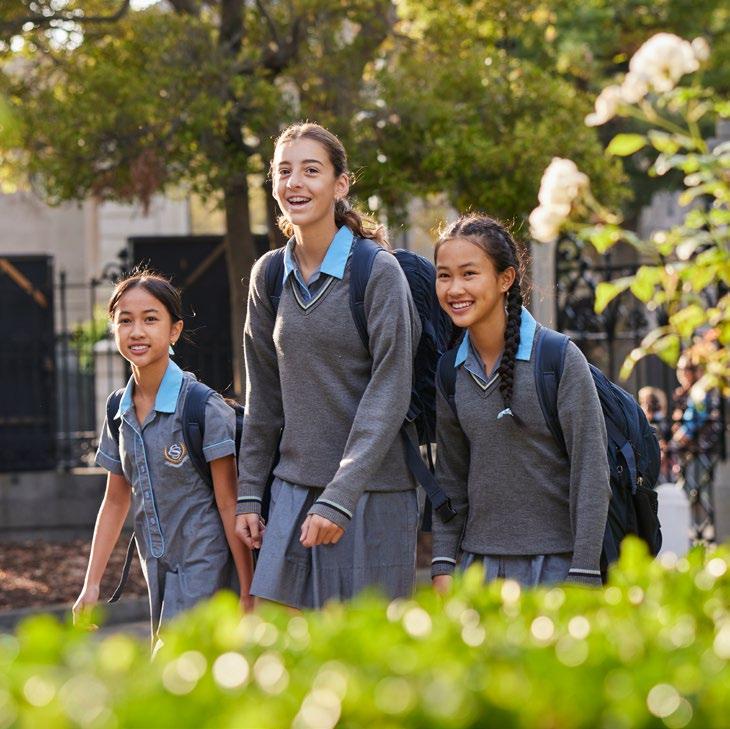
To ensure a continuous culture of learning is implemented in every classroom and co-curricular program, St Catherine’s School enhances the student experience through the engagement of exceptional staff, committed to girls’ education and wellbeing.
At the heart of the St Catherine’s experience is the relationship between teacher and student.
Four years ago, St Catherine’s commenced a partnership of professional learning for our teachers with the University of Queensland, to embed a Thinking Agenda for every girl, in every classroom. Through the implementation of our School’s Strategic Plan, Towards 2025, we have demonstrated an unwavering commitment to cultivating the ‘thinking classroom’ at St Catherine’s, including our commitment to enhancing the student experience through the engagement of exemplary staff, committed to girls’ education and wellbeing.
The articles published within The Thinking Agenda showcase the expertise, as well as the extraordinary level of care our educators place in every student.
Please enjoy the 2023 edition.
Mr Robert Marshall Interim Principal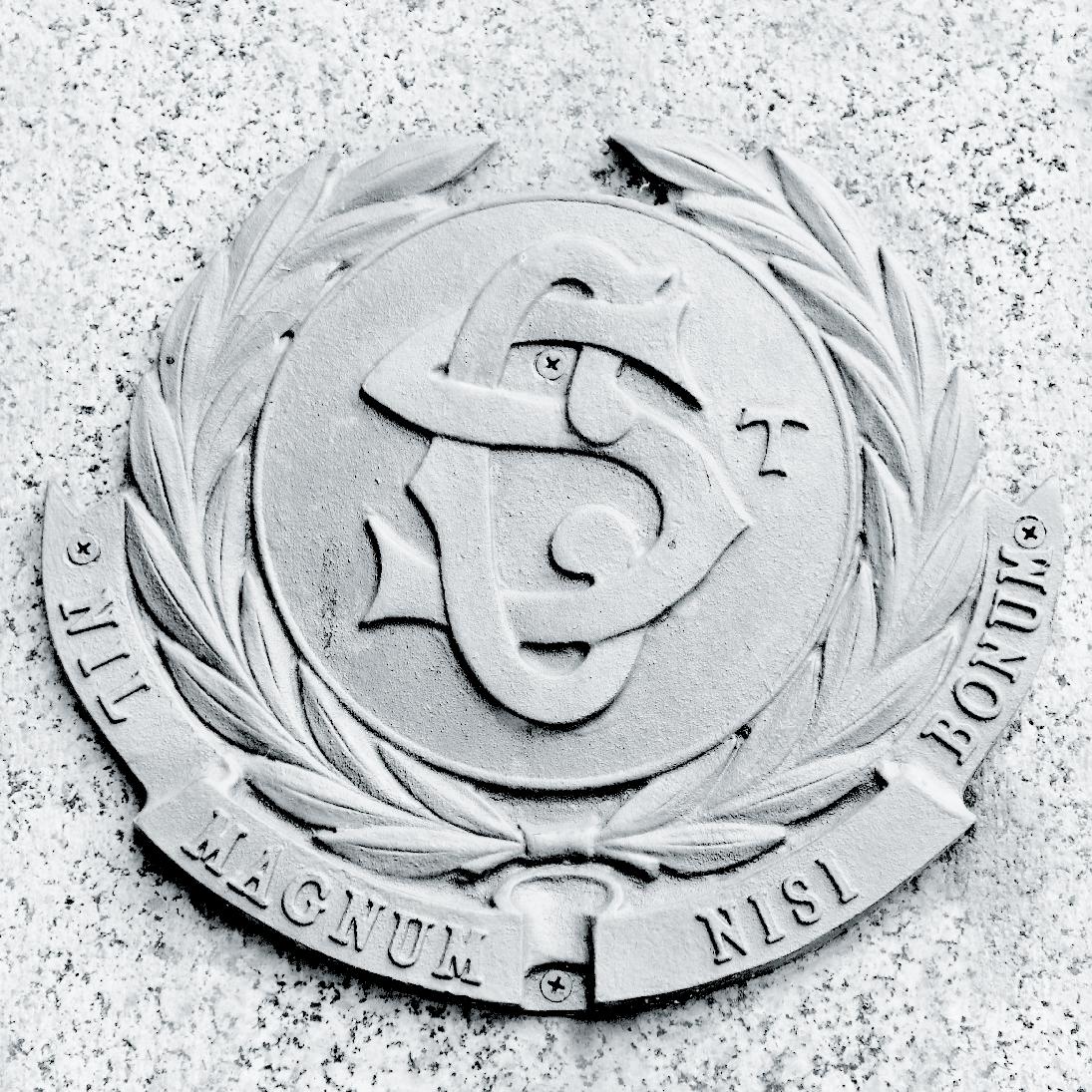
Bold. Independent. Resilient. Creative.
The St Catherine’s School Strategic Intents guide and inform our approach to life at St Catherine’s for our students, staff and wider School community, to fulfil our Charter as a leader in nurturing and empowering young women.
To achieve this, St Catherine’s commits to six strategic intents:
Embed an unwavering focus on intellectual curiosity through a rigorous academic program, sensitive to the needs of individual pursuits.
Enhance the student experience through the engagement of exceptional staff, committed to girls’ education and wellbeing.
Encourage our students to be proud of their accomplishments, seek out challenge and build personal leadership and confidence.
Ensure opportunities for our students through a cohesive, diverse and inclusive community of current and past parents, St Catherine’s alumnae and wider school network.
Empower young women to discover through experience and find their voice in the communities and world around them.
Envision the delivery of learning environments for students and staff that lead the world in innovative and contemporary design and the delivery of exceptional educational programs.

Name: Mrs Ceri Lloyd Title: Deputy Principal – Teaching and Learning
Date: 17 February 2023 Strategic Intent: Academic Achievement
Text It is with pride that our school celebrates once again some extraordinary VCE results. I must congratulate the class of 2022, with a median Study Score of 37 once again, a median ATAR of 92.5, and 33.16% of all Study Scores above 40. These results once again rank our school as the number one girls school in Victoria, for a second consecutive year for our median study score.
Furthermore, 36% of our Year 12 Cohort achieved an ATAR of 95 or above placing them in the top 5% of the state. Fifty-five percent of our Cohort achieved an ATAR of 90 or above, placing well over half our Year 12 students in the top 10% of the state.
Our Class of 2022 has shown great resilience and determination over the last three years and during the COVID pandemic which resulted in 263 days of lockdown.
As a school we are so proud of our VCE Academic Care, centered around high levels of personalised support for students and the outstanding expertise of all our teachers.
St Catherine’s is always looking at ways to implement teaching and learning initiatives that produce optimum student outcomes and 2023 is no exception.
We are now in the third year of our Senior Years Learning Model and our Independent Learning Tutorials in Years 10 and 11. These Masterclasses have provided our senior students with a learning approach that offers independence, flexibility, and agency.
The blended learning model of synchronous and asynchronous classes has gone from strength to strength as we have improved the delivery based on student and teacher feedback. The evidence we have gathered from our surveys shows clearly that students are highly engaged with the Masterclasses and appreciate the
independent learning approach where they have more choice. Students are stepping into some of what is expected of them in their tertiary studies and careers.
Advisory Years 7 to 12
The Academic Advisory Program for 2023 is a new program written for St Catherine’s by Miss Kristy Forrest, Head of Professional Practice, and me. It aligns with our Teaching and Learning Framework, the character dispositions and learning continuum.
Academic Advisory Sessions introduce all students to specific learning and study strategies and skills. These sessions provide them with an opportunity to apply a strategy and then reflect and review their approach linked to explicit success criteria.
The sessions run every Tuesday for 20 minutes and are delivered in three-week modules by House Tutors, supported by Heads of Year and the Directors of Middle and Senior Years.
The Program has been written to align with student efficacy and agency in learning through a series of strategies, self-checking routines and explicit success criteria in every module.
At St Catherine’s our aim is to develop in every learner the capacity to clearly understand the key skills required for their study, learning, revision, and examination performance. Importantly, learning how to apply these strategies to achieve academically and review the strategies as they journey through their education at St Catherine’s.
I am excited about the possibilities of this Program which is at the forefront of student learning, informed by the latest research and pedagogies.

Name: Michelle Carroll Title: Principal Date: 17 February 2023 Strategic Intent: Exemplary Staff
Launching this year, our Senior School will be defined in two key learning sectors:
Middle Years Learning Model (Years 7 to 9) under the leadership of our new staff member, Ms Freda Armstrong, in her role as Director of Middle Years and Senior Years Learning Model (Years 10 to 12) signifying the commencement of VCE programs across Years 10 to 12, ably led by Director of Senior Years, Mrs Alison Cassidy.
Together with Deputy Principal – Teaching and Learning, Mrs Ceri Lloyd, the Senior School will continue to embark on our fourth year of embedding St Catherine’s School’s Thinking Agenda into every classroom in the Senior School.
As a key feature of our Strategic Plan and formalised through our partnership with the University of Queensland, we have reshaped our teaching practice at St Catherine’s to equip our students with a strong capacity in critical and analytical thinking, evidenced through the recent revised editions of the VCE Study Designs.
Critical and analytical thinking is desired well beyond the classroom as it shapes much of the knowledge economy and the changing nature of the workforce. Such examples include identifying biases in data, news and in people’s own interpretations. Through critical and analytical thinking students develop deeper understanding of complex ideas, knowledge and exercising empathy for different perspectives.
The concept of building a greater ‘depth of knowledge’ is most often applied to the ‘thinking that students do’ – during class time, and through their assessments and evaluations. Undoubtedly, the most important thing happening in a classroom, at any given time, is what a student is thinking. Key questions for teachers include:
• How do you know students are thinking in your classroom?
• How do you plan for student thinking?
• How do you give feedback on student thinking?
The development of students’ higher-order intellectual skills or cognitive thinking abilities is the most important educational task of schools today.
By way of example, the Australian Curriculum and the current VCE English Study Design, requires secondary school students to critically analyse the way in which language is used to persuade in a variety of texts. Students from Year 7 examine how persuasive language is used to express an argument to strengthen the intended impact of texts, including newspapers and multimodal texts.
As students progress to Year 12, the development of their critical understanding of contemporary media and the differences between media texts requires them to analyse how written and visual techniques are used to persuade readers. This skill is essential to interpreting the world with a critical and discerning mind. These abilities underpin our students’ perceptions of the world and consequently the decisions they make.
The recent explosion of generative AI, like Chat GPT, has been met with mixed reactions in education. Indeed, AI raises questions about how we assess students, how students learn to write, and what constitutes cheating and plagiarism. In reply, some government education departments across Australia have banned access to Chat GPT in schools.
Our view at St Catherine’s is that AI is another ‘intellectual partner,’ that can be used to inform our teaching and learning. Our students will be educated on this new software to enable them to access it when appropriate for their own studies, to correctly reference work as per other search engines, and strengthen their studies, much like they will use AI in their workplace in future years.
As we analyse the VCE results from the previous two years, I am confident every classroom at St Catherine’s is a ‘thinking classroom.’ A learning space where every student is actively engaged to not just rote learn information but engage in pedagogy driven by the belief
that learning is shaped by students who are taught how to question and how to learn. From this they will possess an intellectual quality of thinking that prepares them for a complex and interconnected world, rather than accumulating vast amounts of facts and content.
Valuing innovation, as evidence by our Senior Years Learning Model, our Year 9 Critical Conversations Program, and the new Academic Advisory Program, (highlighted in this edition of the Blue Ribbon by Mrs Ceri Lloyd), we will approach AI and Chat GPT as the next phase of innovation and the exciting world of learning our students will engage with at St Catherine’s in the coming year.
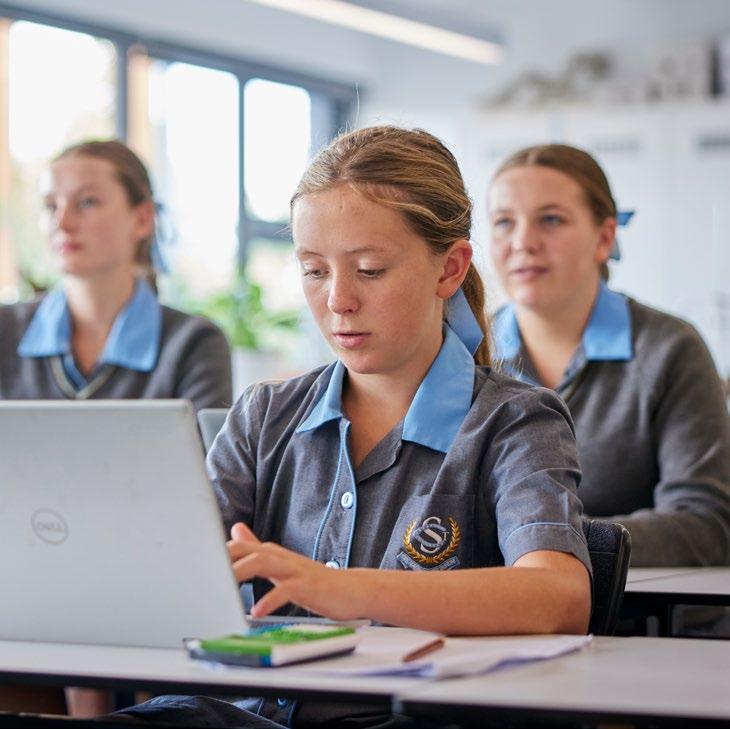
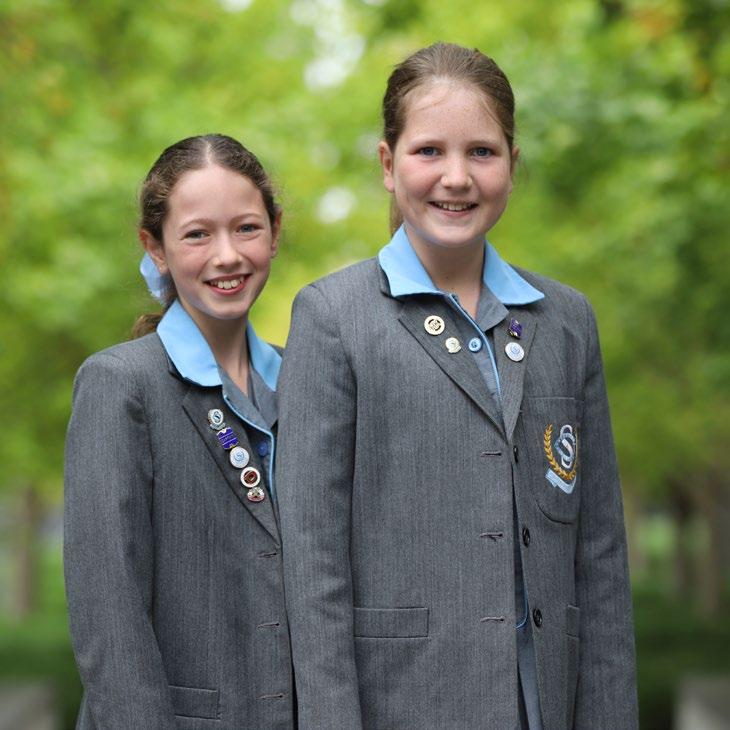
Name: Charlotte Morris & Camilla Thomas Title: Barbreck Co-Captains
Date: 24 February 2023 Strategic Intent: Student Leadership
We put ourselves forward for this position because we love Barbreck and wanted the opportunity to make a difference. We are looking forward to working hard for our community where girls feel happy, safe, comfortable and can achieve.
We understand that the role of Junior School Captain has big responsibilities to serve the girls of Barbreck. We want to lead with courage, fairness, and determination, which brings us to our theme for 2023.
Yes, our theme for the year is determination. We chose this theme because we want Barbreck girls to be determined to try hard and be the best girls we can be, and for Barbreck to be the best junior school ever!
We are determined to be a powerful Year level that leaves an unforgettable mark on Barbreck as one of the best Year 6 levels to pass through its gates. Yes girls, we can do this!
We are also determined to highlight the need for respect and courtesy. In a world where there is much conflict, let us create an atmosphere of peace, care for each other and respect for one another.
We are determined to actively listen and to be considerate of each other, working together to raise awareness of the needs of those less fortunate and the need to care for the environment, both inside and outside of Barbreck.
We call on our fellow Year 6 girls to step up and seriously take on the responsibility of being determined leaders and to be a powerful team, one committed and determined to being the best Year 6 group that we can be, and to be role models for each other and every girl here, not just when it suits, but for the whole year!
We are determined to do this by:
• encouraging each other to work as a team;
• having a positive ‘can do’ attitude by reminding each other of the important roles we play in the lives of our fellow students;
• setting the tone and standards of our School;
• leading by example in all that we do; and
• remembering that we represent our School and fellow students through our actions, words, and appearance.
We truly look forward to being your Junior School Captains and we cannot wait for the great year ahead.

Name: Mrs Gina Peele Title: Deputy Principal – Student Programs
Date: 24 February 2023 Strategic Intent: Co-curricular Opportunities
To reach our full potential and achieve our goals we must move outside of our comfort zones and deliberately place ourselves in situations where we may fail or be uncomfortable. This is a concept known as ‘failing forward’.
Failing forward requires us to let go and not hold ourselves back because of a fear of failure. It asks us to try new things, or something we are afraid to do. It means stepping outside of our comfort zones, even if the outcome or path is not clear. While trying something new can be scary, to be truly open to personal growth and learning, we must be bold and independent in the face of these fears.
This failing forward approach underpins our co-curricular program at St Catherine’s School. We support our students with opportunities to reach their full potential through programs and experiences that require them to take positive risks, explore with curiosity and lead with strength.
Our Student Executive leaders for 2024 recently shared their ‘signature moment’ at our School during their Leadership speeches held in Term 3. As I listened to these speeches, it was clear our new student leaders had developed their confidence to lead through failing forward and experiencing discomfort on the path to school leadership.
Jisu Yang shared her fear of public speaking when in Year 9, “After my first daunting public speaking experience, I decided to challenge myself even more, signing up for more competitions. While there were more losses than wins, what I realised was we should not be so frightened of our fears. My Year 9 self would not believe I am standing here today delivering a speech to our entire Senior School.”
Rhea Werner talked about her signature moment during the DAV Debating Competition, where she used the wrong word in a debate and felt like her world had stopped. “But in that moment, I wasn’t banished or cast out, but instead people started to laugh, and it made me realise that it’s not about the outcome or being perfect, it’s about the mistakes we make along the way that make us into fearless girls.”
Georgia Hennessy spoke about her collective experiences in the House Arts Program. “I realised that the significance of House Arts was never just the final performance, but the countless moments that lead up to it. The rehearsals, camaraderie, and support. Comparably, our time at St Catherine’s isn’t just marked by grand events or milestones. It’s the daily interactions, challenges, and small victories that truly shape our journey. It reminds us to value and nurture the quieter moments, where the real magic of our School lies.”
Alice Molnar said taking on a Netball coaching role for younger St Catherine’s girls taught her as much as it taught them. “We all learnt the importance of resilience, continued effort and that winning isn’t everything. The relationships we forged as a team were amazing. Coaching has been instrumental in making me feel part of the greater St Catherine’s community.”
As portrayed by our 2024 Student Executive, St Catherine’s School has many opportunities for our students to grow, develop and learn through exploring interests and taking up new opportunities.

Name: Ms Mary-Anne Keratiotis Title: Head of English | Debating and Public Speaking Coordinator
Date: TBC Strategic Intent: Co-curricular Opportunities
St Catherine’s School’s Debating and Public Speaking Program provides students with a strong foundation for success in their academic, professional, and personal lives. The Program develops skills in effective communication, critical thinking, confidence, research abilities, persuasion, conflict resolution, leadership, and networking.
A dynamic form of public speaking, debating promotes the intellectual exchange of ideas and confidence in students’ abilities to prepare, present and defend logical arguments. Students learn to think quickly and speak with spontaneity through St Catherine’s Debating Program.
Our Senior DAV Interschool Debating Program enables 10 teams of Years 9 to 12 girls to debate both prepared and secret topics against teams from other schools in the region. Coached by past students, our Senior Teams approach training sessions, and debates collaboratively to prepare and present speeches with clarity, confidence, and conviction.
The DAV Junior Secondary Debating Program caters for Years 7 and 8 students. This Program takes place in Terms 3 and 4. Our Junior Teams are supported by Year 11 mentors who help them prepare for their debates. Our Barbreck debaters also enjoy being coached and mentored by our Year 10 debaters who form the C Grade Team in the Debaters Association of Victoria (DAV) Program.
Traditional Debating is offered outside the Senior Debating season through the DAV Women’s Competition and the Deakin Law Debate, both of which attract strong debaters around the State.
An exciting component of the Debating and Public Speaking Program is the opportunity to participate in the Bond University National High School Mooting Competition. This Competition attracts students undertaking
Legal Studies and sharpens their advocacy skills. Those interested in extending their skills beyond traditional Debating are invited to join the British Parliamentary Competition –a much more adversarial and animated style of Debating. This Competition provides students with the opportunity to develop legal arguments in response to a case study and present them in a simulated court proceeding before a panel of judges. This requires great dedication and resilience, as the students must firstly interpret previous High Court judgements and relevant legislation before applying them to the given case study.
The ability to speak confidently in a public forum is a highly valued skill and St Catherine’s participates in several Interschool Public Speaking Competitions. Students interested in politics can now join the Robert Menzies Speech Competition. Those students interested in theatre and performance can take part in the Rotary Ainger Peck Public Speaking Award or the Festival of the Speech and Drama Teachers’ Association of Victoria, which reward personality and a strong manner in Public Speaking.
Traditional competitions offered by the Debaters’ Association of Victoria and Rostrum Voice of Youth have seen numbers almost double in the past few years. These competitions provide opportunities for students to explore both persuasive and discursive styles of Public Speaking on a whole range of topical and personal issues which assist them in developing strong personal opinions. Finally, those students who have really honed their skills over the years are encouraged to compete in the VCAA Plain English-Speaking Award, where maturity, originality and substance are the hallmark of the winners each year.
Across all aspects of St Catherine’s Debating and Public Speaking Program our students are supported by expert staff as well as Old Girls who return to Campus to coach the girls. This provides a wonderful mentoring opportunity for both our students and returning Alumnae.
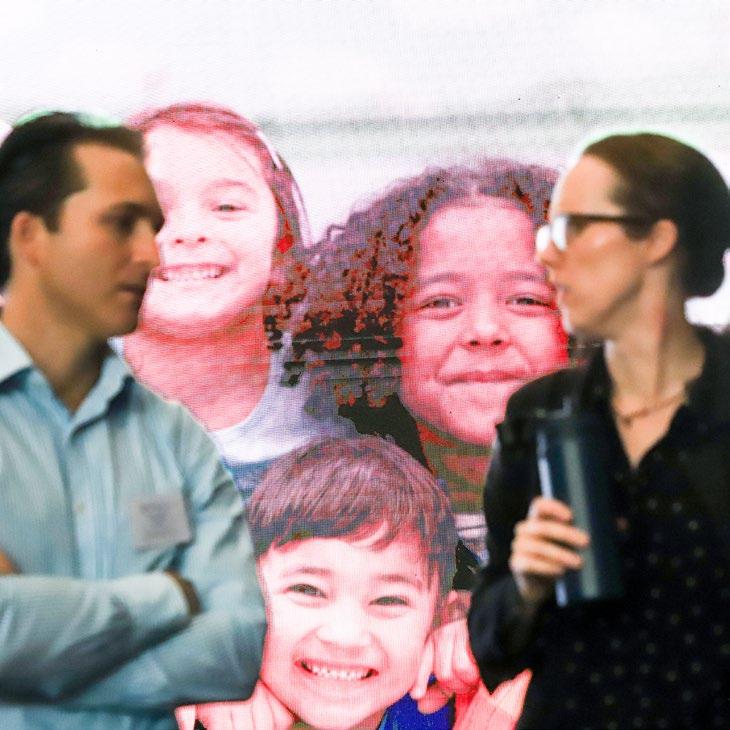
Name: Miss Kristy Forrest Title: Head of Professional Practice
Date: 10 March 2023 Strategic Intent: Exemplary Staff
‘What we see of student thinking is only the tip of the iceberg. It is our job to reveal the processes and sources of their reasoning.’
As part of our ongoing partnership with the University of Queensland’s Critical Thinking Project, we welcomed Mr Adam Kuss to St Catherine’s to facilitate a workshop for our Senior and Junior School staff on Teaching for Thinking in the middle years.
Adam is currently working in dual roles with the University of Queensland (UQ) and Brisbane Grammar School’s Learning Organisation Team. Adam is also completing a PhD on how school leaders’ understanding of leadership and pedagogy influences their professional practice. Adam has previously worked as a Head of Mathematics and Deputy Principal in Brisbane.

Adam’s session focused on the importance of developing subject-specific reasoning skills in our students. Moving through several practical strategies, Adam facilitated cross-faculty discussion on how students can best craft arguments in their subjects and emphasised the need for students to practise taking a stance on issues such as source credibility and data reliability.
The workshop is directly related to our Teaching and Learning Framework, particularly the Learning Competencies of Metacognition and Inquiry. It reiterated the need for students to engage in rigorous discussion and to regularly engage in the core cognitive skills of analysis, categorisation, evaluation, and justification. Adam convincingly argued that this can be done at all ages, in all subjects, and we look forward to putting his advice into action and sharing our practice in the future.


Name: Ms Sarah Bethune Title: Head of Early Learning
Date: 31 March 2023 Strategic Intent: Academic Achievement
Communication is an integral part of our Early Learning Centre curriculum. From birth, children begin to learn to communicate with others for a range of purposes. They are intrinsically motivated to share their ideas, thoughts, questions, and feelings and to use a range of tools and media to express themselves and connect with others. When children become part of a language-rich, group learning environment, they begin to implement all aspects of their communication.
Through our Early Learning Programs, we aim to work towards developing the children’s communication skills and understanding and assist them to become effective communicators in a range of contexts.
Children are effective communicators
5.1 Children interact verbally and non-verbally with others for a range of purposes
5.2 Children engage with a range of texts and gain meaning from these texts
5.3 Children express ideas and make meaning using a range of media
5.4 Children begin to understand how symbols and pattern systems work
5.5 Children use information and communication technologies to access information, investigate ideas and represent their thinking
Literacy and numeracy capabilities are important aspects of communication and are vital to successful learning across the curriculum. Literacy and numeracy experiences are richly embedded in our Early Learning Programs. It is critical that these experiences are relevant and meaningful in the context of the children’s lives.
“Positive attitudes and competencies in literacy and numeracy are essential for children’s successful learning. The foundations of these competencies are built in childhood.”
– Early Years Learning Framework for Australia
Literacy is the capacity, confidence, and disposition to use language in all its forms. Literacy incorporates a range of modes of communication including music, movement, dance, storytelling, visual arts, media, and drama. It also includes electronic and print-based media.
Children are exposed to a range of books and texts within the Program. Prints are displayed in the classroom learning environments, and children can engage with stories, learn songs, rhymes, poems and play with words. Children engage in regular conversation and discussion with their peers and educators. They learn the roles of listening and speaking and develop an understanding that conversation is a reciprocal exchange.
Numeracy is the capacity, confidence, and disposition to use mathematics in daily life. Children are provided with play and inquiry-based opportunities to explore and learn more about the concepts of numbers, shapes, patterns, measurement, classification, time, currency, and space. It is important that children have opportunities to apply these understandings to everyday contexts so that they learn how these understandings apply to daily life.
Technology is integrated into the children’s play, experiences, and inquiries. The children learn new skills and techniques on how to use technology and develop an understanding that technology can be used for exploring new information. The use of technology is not isolated. It is interactive as small groups of children and educators collaborate. Technology is integrated into the program for a specific purpose or a specific inquiry.
The frequent conversations and discussions echoing from the ELC classrooms are testament to the richness of the opportunities designed to enhance their children’s communication and help them become effective communicators over time.

Name: Mr Robert Marshall Title: Researcher-in-Residence
Date: 6 April 2023 Strategic Intent: Student Leadership
“Whenever you feel afraid, just remember. Courage is the root of change – and change is what we’re chemically designed to do. So, when you wake up tomorrow, make this pledge. No more holding yourself back. No more subscribing to others’ opinions of what you can and cannot achieve. And no more allowing anyone to pigeonhole you into useless categories of sex, race, economic status, and religion. Do not allow your talents to lie dormant, ladies. Design your own future. When you go home today, ask yourself what YOU will change. And then get started.”
– Elizabeth Zott, Lessons in Chemistry
These are the words of the feisty Elizabeth Zott who is smart, articulate and intolerant of those who doubt the ability and capacity of women.
For the uninitiated, Elizabeth Zott is the central character in the wonderful book Lessons in Chemistry, by Bonnie Garmus. The book tells the engaging story of Elizabeth along with her daughter Madeline and dog Six-Thirty.
Without spoiling the book for those who have not read it, Elizabeth is a scientist who specialises in Chemistry. Enduring a frustrating scientific career, which sees male colleagues getting credit for her work, being underpaid, and passed over for recognition and promotion, Elizabeth finds herself fronting a cooking show which she conducts like a chemistry class. She then becomes a nationwide sensation in the process!
I just finished this book last week and it has caused me to think about the place of women in our society and around the world. Earlier this term we celebrated International Women’s Day which highlights the talent of women everywhere, but also the challenges which remain in ensuring fairness, equality, and respect for all women.
Every day I am at St Catherine’s, I find myself surrounded by women and girls who are bright, engaging, funny, warm-hearted and with so much to contribute to our community and the world at large. After reading about the prejudice Elizabeth faces in her world daily, it makes
me wonder about the lives our students will experience. Our students are talented and smart. They are kind and generous. They want to make a difference in the world.
As you would be aware, former President Barack Obama recently conducted a lecture tour in Australia. During the course of the event in Sydney he said “I am actually convinced that if we could try an experiment in which every country on Earth was run by women for just like two years… I am confident the world would tilt in a better direction.”
The Honourable Julie Bishop who was chairing the session, retorted back, “just give us two months!” While her response was clearly meant as a joke, deep down she probably meant it. The women at St Catherine’s instil in our students a belief that every girl can succeed at whatever they put their mind to.
The other book I read over the last few weeks, A Woman of No Importance, by Sonia Purnell. It was a fascinating story about real life hero Virgina Hall.
Virginia was an American spy who was the most highly decorated female civilian during World War II. Virgina, almost single-handedly, organised and led the French resistance during Nazi occupation. Her bravery, courage, tenacity, and leadership saw many successful missions which advanced the Allied war effort. She reputedly assisted bringing forward the D-day invasion and in bringing the war to an end about 12 months earlier than might have happened otherwise, saving countless lives in the process.
Virginia, like our fictional hero Elizabeth, also faced discrimination by male colleagues, had promotions blocked, and did not receive the recognition due to her until many decades after the war had concluded.
It was said of her, that “she gambled again and again with her own life, not out of a fervent nationalism for her own country, but out of love and respect for the freedoms of another.” She managed to survive the horrors and extreme dangers of the war while “looking natural and ordinary” while doing “unnatural and extraordinary things.”
Both Elizabeth and Virginia remind us that we should not set limits on what can be achieved. Elizabeth Zott is exasperated when she says “as humans, we’re by-products of our upbringings, victims of our lacklustre educational systems, and choosers of our behaviours. In short, the reduction of women to something less than men, and the elevation of men to something more than women, is not biological: it’s cultural. And it starts with two words: pink and blue. Everything skyrockets out of control from there.”
Every day I see St Catherine’s girls excel in academics, Sport, Art, Music and in service to the community. St Catherine’s is unashamedly an all girls school where our students can be the people they wish to be without hindrance.
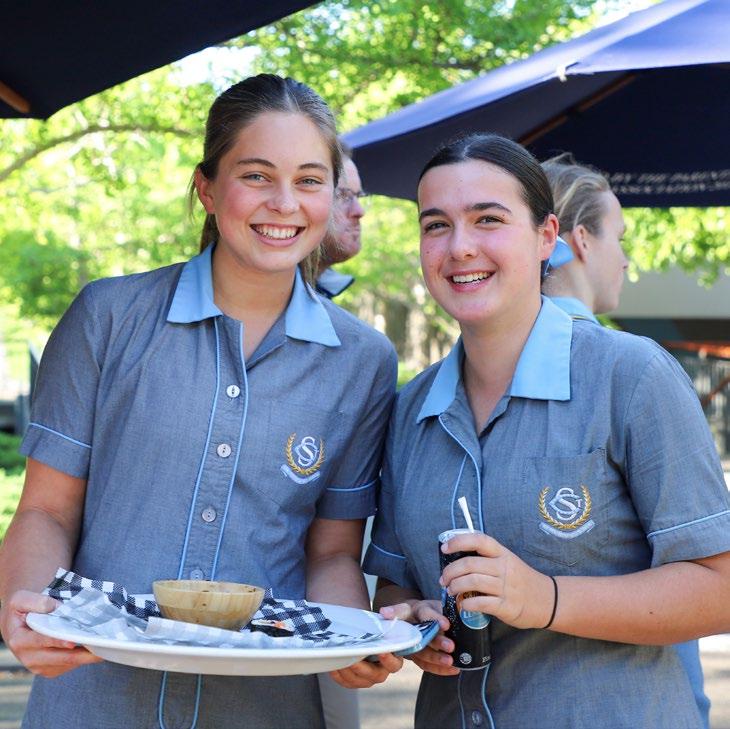
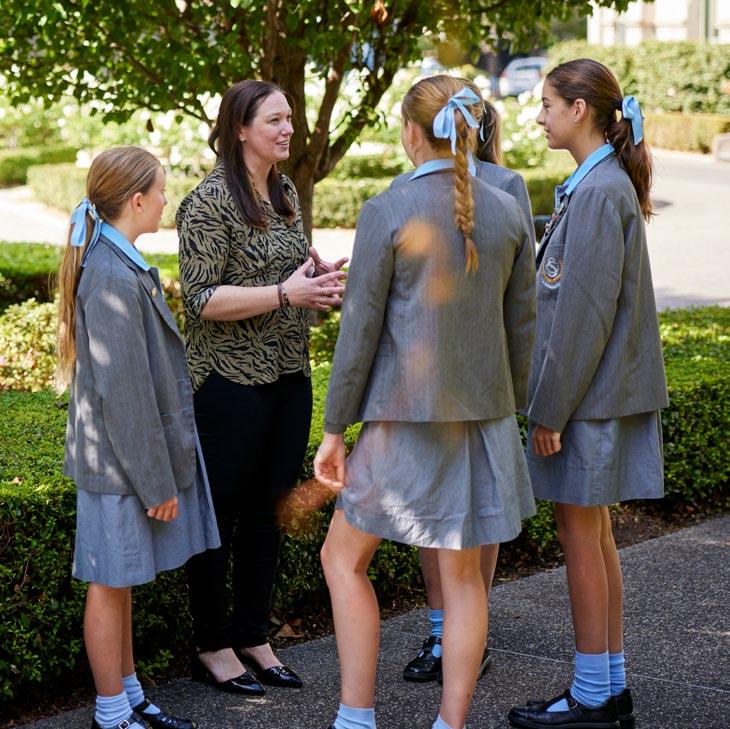
Name: Ms Freda Armstrong Title: Director of Middle Years
Date: 28 April 2023 Strategic Intent: Student Wellbeing
As the Director of Middle Years, it is my role to lead the growth, nurturing and development of the Years 7 to 9 students through St Catherine’s School’s Model of Academic Care. I achieve this by integrating the Wellbeing, Careers, and Academic Programs of the School, and aiming to develop the leadership skills of every student. I work closely with the Heads of Year, the Heads of Faculty, the House Tutors, School and Careers counsellors and teaching staff to provide outstanding opportunities for students in Years 7 to 9 in which to thrive.
From around the age of 10 to 15, the ‘middle years’ mark the transition from childhood to adolescence. It is a time when young people undergo significant physical, cognitive, emotional, social, and moral changes.
The onset of puberty results in swift and profound hormonal and structural changes in the body. These changes are more rapid and dramatic than at any other period in their life. Whilst the sequence of physical change is generally similar from one person to another, the onset, rate, and timing of these changes are highly individualised.
During these years, cognitive development and brain changes also reach their peak. This can impact on a young person’s ability to manage the emotional, social, and moral challenges of this stage of their lives, along with their learning ability. Therefore, it is crucial for educators to prioritise the engagement and participation of young people during their middle years of schooling.
This is a message the students at St Catherine’s will often hear – to get involved, to give things a go, and to learn to be Bold, Independent, Resilient, and Creative. Learning and developing these character dispositions allows for students to embrace, and be successful in, their middle years of education.
Schools have a role to play in providing students with a safe and supportive environment in which they can learn and grow. Students need to be given both explicit and implicit opportunities to develop social and emotional skills, such as resilience, self-awareness, and empathy.
St Catherine’s has dedicated time in each student’s timetable every week to explore these very topics. The Resilience Project, the foundation of our Wellbeing Program across Years 7, 8 and 9, focuses on connection, purpose, kindness, emotional literacy, and physical health. The three pillars on which the Program is built are Gratitude, Empathy, and Mindfulness. Student wellbeing is closely linked to academic achievement, and schools that focus on both ensure students can achieve the best possible outcomes from their education.
Strategies for supporting students in the middle years
Effective and successful strategies for supporting students include early intervention, prevention, promoting positive school culture, and focusing on evidence-based practices for supporting wellbeing.
Schools that track and monitor student wellbeing alongside academic progress can ensure students are receiving the support they need to succeed.
As a Mathematics teacher, analysing data is an activity close to my heart. As a smaller school with smaller class sizes, St Catherine’s provides more expert guidance for fewer students. This allows for early intervention practices to be implemented in a timely and caring manner. Tools and data received from The Resilience Survey, Toolbox, Digital Compass, and the Mission Australia Survey also help to keep teachers abreast of the issues and challenges our students are currently facing, and the issues they are not!
Parents play a critical role in supporting their children’s education during this time. At St Catherine’s, we pride ourselves on engaging positively with parents in discussions about their daughter’s education through our continuous reporting model, parent teacher conferences and open dialogue with School leaders.
By investing in adolescent success in the middle years, I have a firm belief that we can improve outcomes for individuals, families, and communities and contribute to a more prosperous and equitable society.
I am delighted to be leading a team of educators who are focused on the middle years at St Catherine’s. The creation of my role in 2023 and beyond is a testament to the School’s commitment to further strengthen the focus on education across these critical years of adolescent development.
I welcome every opportunity to engage with parents, families, and the wider School community and look forward to continuing our efforts to provide an exceptional educational experience for all students in our care.
References
Adolescent Success Position Paper 2022
NAB Education Insights Special Report 2023 (Part 1)


Name: Amanda Shen Title: Year 12
Date: 28 April 2023 Strategic Intent: Student Voice
For Amanda Shen, her ability to balance Year 12 Mathematical Methods and English with an accelerated university subject at Deakin University was achieved through her involvement in Visual Arts.
“Art for me provides escape and inspiration for my other subjects. It allows me to take a break without leaving my concentrated mindset. Instead, I channel my attention into a completely different form of thinking whilst still gaining valuable productivity,” shares Amanda.
“Studying Art allowed me to view and approach my Year 12 subjects quite differently. I have learnt to see things from multiple perspectives and look beyond the most obvious answer. In Legal Studies I use my Art skills to see cases and questions through an additional cultural perspective, which I have learnt has a heavy impact on the experiences and actions of people. In English, my critical thinking skills allowed me to perceive perspectives others may not, providing me with a unique angle to present my ideas.”
Amanda’s creative mind saw her reach her academic goals completing Year 12 with exemplary results, “I look back now on Year 12 with relief and appreciation for all the hard work I put in throughout the year. It felt like a great way to end 13 years of school.”
Reflecting on the support she received at School, Amanda believes the classroom environment and teachers’ support helped her considerably. “The individual relationships I established with all my teachers facilitated easier conversations when I was met with queries – I think that’s what made them so approachable. The quality of teaching also just promotes such a good classroom environment allowing us to all learn from discussions.”
“St Catherine’s promotes individuality and personal creativity, focusing more on the process of learning rather than the end achievements, letting that come naturally,” explains Amanda, “As students, we were assisted during the process by teachers who tailored their styles to our individual needs.”
“Art teaches us to appreciate our deeper perspectives. It inspires us to think about our own purpose and meaning and encourages us all to think critically and reflect. My Visual Arts practice taught me flexibility and openness in thinking across all my subjects and encounters in life. It taught me to adapt and create meaning through my own ideas which I think is extremely beneficial as I move into tertiary studies.”

Name: Mr Nick Grunden Title: Head of Music
Date: 28 April 2023 Strategic Intent: Co-curricular Opportunities
St Catherine’s School’s annual Concerto Concert offers our musicians the opportunity to perform significant works with accompaniment – including piano, small-staff ensemble, or a full orchestra.
In addition, the Concert also offers members of our Jorgensen Orchestra a chance to experience functioning as accompanists. This is an exceedingly difficult and specific skill set. It is particularly challenging to master given the Concerto Concert occurs at the start of the school year.
This year, our Concerto Concert was held on Thursday 30 March in The Jamie and Rebecca Gray Theatre. Occasions such as this provide a wonderful opportunity for our musicians to showcase their skills and continue to develop their performance capabilities. Throughout the Concert there was a wonderful sense of warmth, understanding, appreciation and gratitude from both our musicians and our audience.
It was a particularly memorable Concert for Kathrina Ang, Chloe (Coco) Butterfield and Christina Wu, our three violin scholarship recipients, who displayed their violin proficiency to our audience, including special guests Mrs Sue Hayes and members of the Lloyd Family – who gifted the Lloyd Violin a Collin-Mezin Violin in honour of Old Girl, Danielle Lloyd (’83), Lady Southey AC and Ms Lindy Shelmerdine (’80) – who donated the Praga and Postiglione Violins to
our School to inspire our most advanced students during their formative years of study. It was wonderful to see our scholarship recipients engaging in animated conversations with our violin donors at the conclusion of the Concert.
This perfectly aligned with the Music Faculty’s focus on continuity and community for 2023. The stories that musicians make when connecting with their instruments are incredibly special. The juxtaposition of the constant struggle and striving for perfection, and the satisfaction provided by a positive experience in performance was evident.
The gifting of the Collin-Mezin, Praga and Postiglione Violins builds community. The instruments themselves have so many stories and have passed through many hands, they are organic, living, and evolving. In this way they are no different to an enduring work of art. Our gratitude to the Lloyd Family and Ms Shelmerdine for their generous contribution to Music at St Catherine’s is enduring.
Congratulations to all our musicians involved in the Concerto Concert. Thank you also to our staff for their expert assistance. Mrs Lisa Cook’s direction of the Jorgensen Orchestra was outstanding as was Mrs Kate Denmead’s piano accompaniment. Thank you to our Choral and Instrumental Captains, Jo-Jo Patterson, and Yifei (Angela) Tang for their guidance as emcees for the evening.
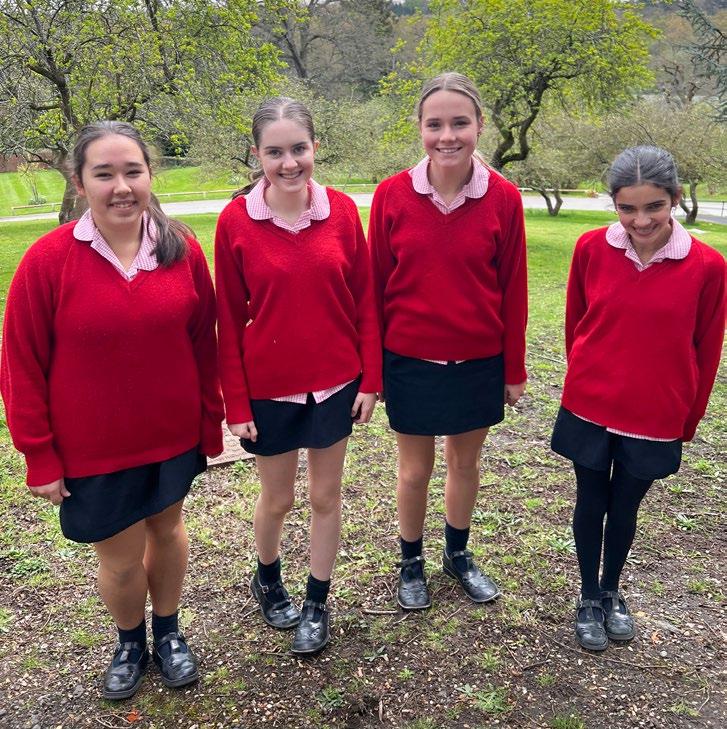
Name: Mrs Gina Peele Title: Deputy Principal – Student Programs
Date: 5 May 2023 Strategic Intent: Co-curricular Opportunities
“Life is a blank canvas, and you need to throw all the paint on it you can.”
– Danny Kaye
Year 9 is a pivotal time in the journey of our students. The long tradition of St Catherine’s School students traveling on exchange in Year 9, is cherished. Students in younger Year Levels enjoy hearing of our students’ experiences and look forward to their opportunity to experience an exchange themselves.
Holistic learning through a variety of experiences shapes and develops our student’s identity. St Catherine’s Global Exchange Program fosters the development of essential skills:
• Resilience, Persistence and Responsibility
• Cultural Learning and Global Citizenship
• Leadership, Confidence and Aspiration
At St Catherine’s School we know these skills are fundamental to a successful learning journey for our girls as they move through every stage of their schooling, tertiary pathways, and careers.
As Term 2 commenced in Melbourne for our students, I had the opportunity to travel to the United Kingdom with 11 students travelling on exchange.
These students are studying as part of the Year 9 Global Exchange Program, designed to offer an extensive range of in-country experiences to study in regional or city schools with our partner schools around the world.
While some schools chose to have programs regionally, our students immersed themselves in an international experience.
During 2023, 27 Year 9 students will be participating in our Global Exchange Program attending schools in the United Kingdom and Canada. Schools include:
• Culford School, London UK
• St Catherine’s School, Bramley UK
• St George’s Ascot UK
• Shawnigan Lake School, Canada
We will also have students traveling to NEGS in Armidale, Buffalo Seminary School in the USA, and Crofton House School in Canada. These Exchange Programs range from four to 10 weeks in duration.
The benefits of exchange programs were explored by Stone and Petricks in their review of literature on education travel, commenting that “Researchers have shown that study abroad can result in a variety of outcomes, including change of perspective or worldview, independence, selfconfidence, intercultural development, global engagement, and dispelling of stereotypes among participants. Intercultural (cultural or cross-cultural) competence, a major focus of study abroad, benefits include elements of cognitive/ knowledge, affective/attitudes, and behaviour/skills.”
In 2022, St Catherine’s Year 10 student Amelie Arnold traveled to Buffalo Seminary School, in the USA as part of our Global Exchange Program. Reflecting on her time in the USA, Amelie acknowledged the eight-week exchange was a significant learning journey for her. Amelie lived in the boarding house with only 10 other students. During this time, Amelie boarded in a room with a student from Afghanistan. Amelie learnt a lot about others and herself during her eight weeks away.
“The first few weeks were really hard. The environment was so different to St Catherine’s School, and we had to adapt. I was comfortable with my friends who travelled with me, who could support me, and I was able to support them. Our exchanges and exchange families welcomed us into the school and their homes.”
“Six months on, I acknowledge learning ‘great independence.’ Everything was by myself, and I had to navigate this independently. I learnt how to make friends to another level and make friends really quickly and use the time I had. I still keep in touch with these friends.”
Having had two years at home through COVID, travelling overseas on exchange took courage and the capacity to learn through discomfort. Amelie is grateful for the chance to be part of the Global Exchange Program.
“It was my first overseas travel since COVID, and it was so much fun. I am still working through what I learnt from the experience, but I know I have matured from the experience. I was able to navigate the challenges of completing schoolwork in Buffalo as well as the work I needed to keep up with at St Catherine’s School. This gave me a lot of confidence in my ability to work independently. I would recommend the experience to others who are interested in travelling on exchange,” shares Amelie.
Educational travel can have differing outcomes depending on the interests and age of young travellers. Programs can offer opportunities to further develop languages by travelling on exchange to France, China, or Japan. Studying in country France, China or Japan is sought after by students studying Language in VCE years, where the study of language and immersion in country provides a deeper understanding.
St Catherine’s students explore their interests and strengths in many areas of our school, both in and out of the classrooms. Exploring travel opportunities and learning through different experiences on a school exchange provides an array of colours for our students to throw at their canvases.
References
Stone, M. J., & Petrick, J. F. (2013). The Educational Benefits of Travel Experiences: A Literature Review. Journal of Travel Research, 52(6), 731–744. https://doi.org/10.1177/0047287513500588

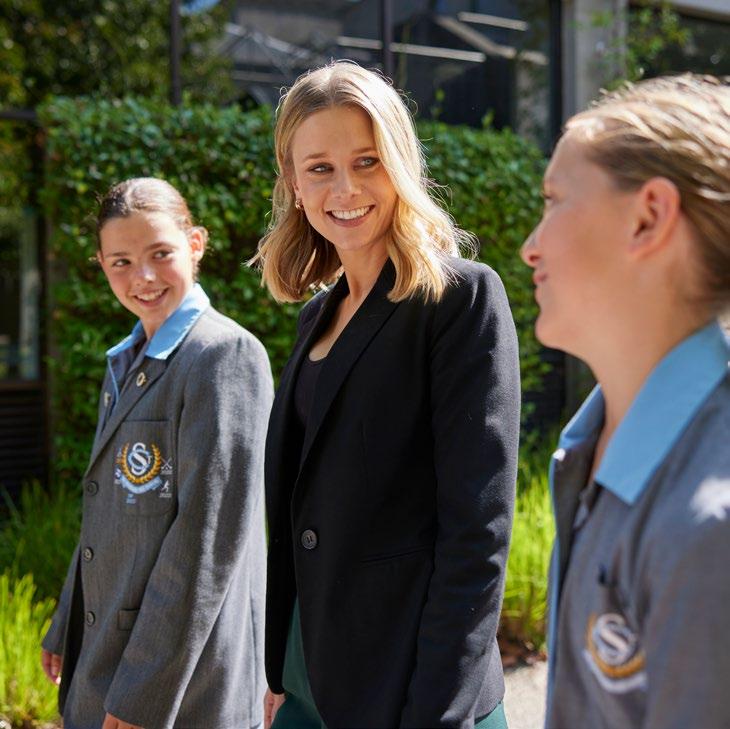
Name: Mrs Alison Cassidy Title: Director of Senior Years
Date: 12 May 2023 Strategic Intent: Student Wellbeing
The VCE, or Victorian Certificate of Education, is a challenging and stressful time for many students. With exams, assessments, and the pressure to achieve a high ATAR, it is easy for students to become overwhelmed and develop negative thought patterns. However, maintaining a positive mindset can have a significant impact on a student’s performance and overall wellbeing during the VCE.
One of the primary benefits of positive thinking is it can reduce stress and anxiety. When students approach the VCE with a positive attitude, they are less likely to feel overwhelmed or hopeless. They are more likely to approach challenges with a growth mindset, viewing setbacks as opportunities for growth and learning. This can help them better manage stress and anxiety, which in turn can improve their mental and physical health.
Positive thinking can also improve academic performance. Studies have shown that students who approach exams with a positive attitude tend to perform better than those who have negative thoughts. When students believe in their abilities and have confidence in their preparation, they are more likely to perform to the best of their abilities. They are also more likely to stay focused and motivated during the VCE, which can help them achieve their academic goals.
Another benefit of positive thinking is it can improve relationships with others. When students have a positive attitude, they are more likely to be optimistic and supportive of their peers. They are also more likely to seek help when they need it and be open to feedback and constructive criticism. This can lead to stronger relationships with teachers, classmates, and family members, providing much-needed support during the VCE.
So, how can students cultivate a positive mindset during the VCE? Here are some tips:
Practise gratitude: Take a few minutes each day to reflect on your success, even if it is small, as well as the things you are grateful for, such as supportive family and friends, good health, or a comfortable home. This can help shift your focus away from negative thoughts and towards positive ones.
Focus on the present: Instead of worrying about the future or dwelling on the past, try to focus on the present moment. This can help reduce anxiety and improve focus.
Surround yourself with positive influences: Spend time with people who lift you up and support you. Avoid those who bring you down or increase your stress levels.
Practise self-care: Take care of your physical and mental health by getting enough sleep, eating well, exercising, and engaging in activities that bring you joy.
Positive thinking is essential for success during the VCE. By cultivating a positive mindset, students can reduce stress, improve academic performance, and build stronger relationships with others. By practising gratitude, staying present, surrounding themselves with positive influences, and practising self-care, students can set themselves up for success during this challenging time.
I congratulate our Senior School students, Miranda Ware (Year 12), Lilla Barrington (Year 11) and Scarlet Russell (Year 11) involved in our recent Senior School Production, Children of the Black Skirt. I also applaud the work of our Head of Performing Arts, Mr James Brown and Assistant Director of the Production, Ms Kathryn Lucas.
Written by Angela Betzein, Children of the Black Skirt is a Gothic tale of three lost children who discover an abandoned orphanage in the Australian bush. Intrigued, they creep inside and learn a confronting history of Australia through the spirits of children who have lived there, from convicts, through World War Two and the Stolen Generation. I acknowledge the voice over of Jasmine Glass (’22) for the somewhat uncomfortable scene with aboriginal children.
Children of the Black Skirt was first produced by the Queensland Arts Council and toured throughout Queensland into regional and metropolitan high schools.
Scarlet Russell’s outstanding performance across 17 different roles was captivating, but it was her humorous depiction of Harold Harrock, the Government Inspector who ensured orphanages adhered to standards of care, that was particularly noteworthy. Whilst enjoying the buffoonery of Harold Horrock’s gluttony, it was Scarlet’s reflection on the scene that was most worthy:
“Although a fascinating role to play, it has been a challenge to balance the comedic aspects of the character with his vile treatment of helpless orphans. Nevertheless, his grotesque representation of institutional greed is important to present in order to adequately recognise the children’s suffering.”
Miranda Ware, in the role as the Black Skirt, is a haunting, solemn figure. Totally silent and heartlessly cruel, the headmistress implements control with a pair of very large, very sharp scissors. Dressed in the signature black skirt, Miranda appears to float across stage affecting authority with every appearance – her eyes and startling hand clap communicating dominance and fear. Miranda’s skill in
depicting this role was at times deeply provocative and led the audience to be intensely curious about the journey of this women, in addition to the story of each orphan.
I have thoroughly enjoyed watching the three girls, Scarlet, Miranda, and Lilla mature as they have emerged from young actors in the Year 7 and 8 productions, to Senior Drama students, in 2023. They command the audience’s attention through every performance. This was particularly evident with Lilla as she adapted 12 different characters within the play. Lilla’s cast notes authentically convey her journey as a Drama student at St Catherine’s, relishing every opportunity and the guidance of our Head of Performing Arts, Mr James Brown over a number of years.
“I have always loved performing, and it’s a career path I would like to pursue after school. Whilst Children of the Black Skirt discuss some heavy and dark themes, it is important to engage with our history so that modern day society can understand and learn from the past.”
In addition to the poignant performances on stage, the Back Stage Crew played an essential role in creating the sound, lighting, and stage management. Congratulations to Stage Manager, Phoebe Russell (Year 12), Assistant Stage Manager Ashleigh Jakobovits (Year 10), and Sound Operator, Danning (Rachel) Liu (Year 11) and Lighting Operator, Anqi (Angel) Cai (Year 9).
The selection of this Play by Head of Performing Arts, James Brown, enabled opportunity for the students to undertake an intimate study of some of the dark elements of Australia’s history. Studying the times, places, and cultures of scripts, as well as the power of language, enables all Theatre classes at School to plan, develop and present productions imaginatively and creatively. For many in the audience last night, Children of the Black Skirt evoked a strong, often spine-chilling response, and unquestionably reflected the strength of our Performing Arts Program at School today.
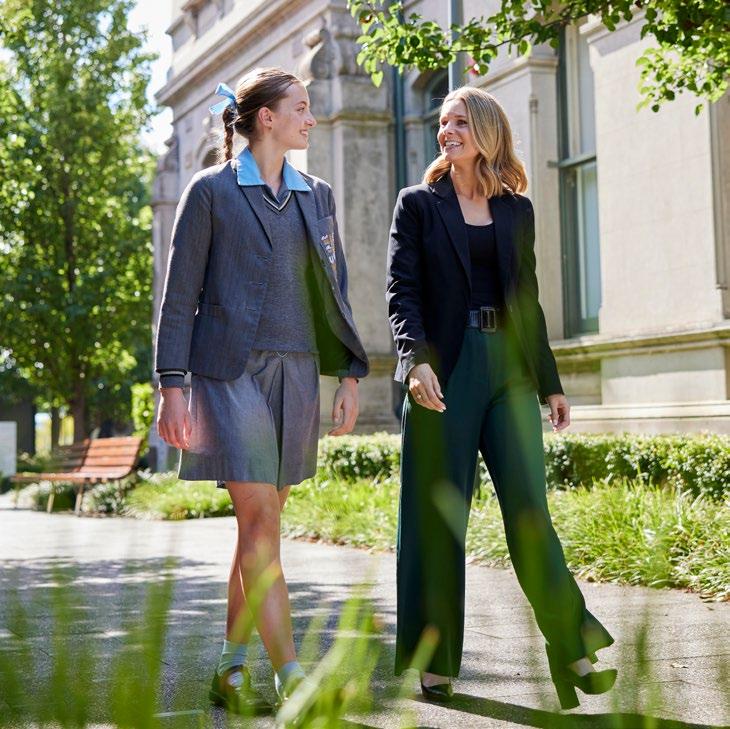

Name: Ms Kristy Tine Title: Careers Practitioner
Date: 19 May 2023 Strategic Intent: Academic Achievement
A key component of St Catherine’s School’s Thinking Agenda is providing our students with authentic learning experiences that equip them with the critical thinking skills and confidence to make independent choices throughout their lives.
As part of this learning approach St Catherine’s School this week hosted a Careers Expo to provide Senior School students with access to university and TAFE providers from across Victoria.
The event provided our students with the opportunity to:
• Speak with tertiary representatives about career options and planning
• Explore a wide variety of potential courses and career pathways
• Learn more about subjects and pre-requisite requirements
• The Careers Expo provided valuable information to students to assist them in making informed decisions about their career journeys, including:
• Subject selections for next term and beyond
• Tertiary course applications
• Future career pathways
The Careers Expo forms part of St Catherine’s comprehensive Careers Program which supports every student, individually. Commencing in Year 7 and scaffolded throughout the Senior School, the Careers Program explores the many facets and influences on work including the differences between a job and career, and how making informed choices improves career prospects in the future.
As students progress through our Careers Program, they begin to better understand their strengths, skills, qualities, and values. They begin to investigate their interests and passions within subject areas. In the senior years, students then begin to engage with the tertiary sector, like the Careers Expo, providing them with the opportunities to take a lead role in developing, assessing, and guiding their future career plans.
Year 11 student Nguyen Thu (Anna) Nguyen Diep said the Careers Expo was a highly anticipated event amongst the VCE Cohorts.
“The Careers Expo was phenomenal! As an immigrant who recently arrived in Australia, the prospect of tertiary pathways can be quite overwhelming to tackle and navigate on my own. At the Expo I was able to meet with tertiary representatives from universities, TAFE, and even the Australian Defence Force, inquiring with them about my career plans,” shares Anna.
“The Expo allowed me to effectively map out the next step, the doors beyond the Heyington Gates and my VCE journey. For each tertiary stand I stopped at, I was given a course guide to read more about the university or other tertiary options that I could consider. Additionally, I could even sign up to receive newsletters to look out for significant dates ahead, including Open Days, and workshops. I also learnt about Early Offers. This was extremely helpful as we are embarking upon our VCE journeys and envisioning a plan that is tailored truly to our interests and ambitions.”
“One helpful thing that truly stands out to me was having many misconceptions cleared just by being at the Careers Expo. Often, we hear discussions and assumptions about a subject that may not be right. Without clarifying them, these misconceptions could obstruct our potential and tertiary options. If it were not for the discussions I had at the Careers Expo, I would have completely missed hearing about the opportunities to pursue international art internships and exchanges in Italy!”
Thank you to all the students and their families who a ttended the Careers Expo and the staff who assisted in the organisation of the event. It is wonderful to provide our students with opportunities such as this to ensure they have the best possible foundation for their futures beyond our School.

Name: Mrs Ceri Lloyd Title: Deputy Principal – Teaching and Learning
Date: 26 May 2023 Strategic Intent: Investing in our Future, Exemplary Staff
It was wonderful recognition to be listed as ‘Finalists’ in the Australian Education Awards in two categories, our Teaching & Learning Framework and Professional Learning Program.
As Principal Michelle Carroll commented, “To be listed as ‘Finalists’ in the Australian Education Awards is an impressive and significant recognition of our collective work on a national scale and reflective of the careful deliberations and innovation in design of both programs.”
The development of both programs has required considerable research and consultation. We are proud to have implemented bespoke programs in teaching and learning for students and teachers, aligned to our Towards 2025 Strategic Intents of Academic Achievement through our Teaching for Thinking Agenda and the Development of Exemplary Staff. We value and nurture our students and teachers through our frameworks, strategies, and programs. A key priority is evidence-based programs where we visibly see the positive outcomes for students and staff. Our Teaching and Learning Framework delivers innovation in curriculum design integrated into student and teacher learning and programs. This year all Senior School teachers are learning in cross Faculty Professional Learning Teams (PLTs) led by a trained teacher coach.
These professional collaborations with colleagues have led to a supportive environment where teachers are working on their Reflective Practice Portfolio to develop curriculum that is focused on our Learner Competencies and Character Dispositions, articulated in our Teaching & Learning Framework (see below). Teachers select a Learner Competency such as Inquiry or Collaboration to develop Resilience and Creativity in their students. The purposeful alignment of our Professional Learning Program to our Thinking Agenda has improved the academic achievement of all our students.
Our Framework underpins all the learning programs we develop for our students. Over the last three years we have implemented some highly innovative and signature programs for our students. A highlight has been the Year 9 Signature Programs offered to students, which is being expanded in 2023.
Our Academic Programs in Year 9 foster partnerships with Alumnae mentors, tertiary institutions, and industry leaders to further explore and build on our Year 9 students’ capabilities and career interests. Our Harknessinspired discussion lessons across Humanities classes capture the intellectual endeavour, critical thinking, and curiosity within our Year 9 students. Details on some of our 2023 subject signature programs are:
English: Students are examining the theme of ‘inequality’ through engaging with a range of texts that raise awareness of the conditions that give rise to inequality across history and places.
Science: Students are completing an extended scientific investigation using inquiry-based science.
Mathematics: Students are learning how to use the graphics calculator (basic steps, strategies, tips, shortcuts). This has created engagement and confidence by providing creative workshops that expose ways to use the graphics calculator outside of the standard classroom setting.
Humanities: The Harkness-inspired Critical Conversations Program in Geography and History continues this year. The use of the Harkness round tables to encourage conversation and discussion continues to work as the architectural centerpieces of the learning spaces for the Year 9 Humanities classes.
Embedding a Thinking Classroom culture across all subjects and creating programs that align with the social, emotional, and cognitive skills students need in learning and life.
Developing our student learning dispositions of being Bold, Independent, Creative, and Resilient.
Focusing on enhanced student knowledge and skills in Collaboration, Inquiry, and Agency.
Increasing engagement and interest in subjects at Year 9 and future pathways for students.
Expanding the capacity of students to analyse, reflect and review their thinking and learning creatively and critically.
Recently I asked Flora Du, our 2023 School Co-Captain, what has been the impact of St Catherine’s School on her learning.
“St Catherine’s has shaped my learning, not only in the way that I approach studying, but also in the subjects I am currently doing. I’m so thankful that we offer a wide range of electives, and that in the younger Years our students can select a specific pathway they desire. I think that many of my current academic strengths are attributed to how I could tailor my path based on my interests from quite a young age, allowing me more time to develop my abilities with more depth and confidence.” Flora Du Year 12 Co-Captain
It is a privilege to work in partnership with the students and teachers at St Catherine’s to develop and implement our innovative Teaching and Learning Framework and student academic programs.
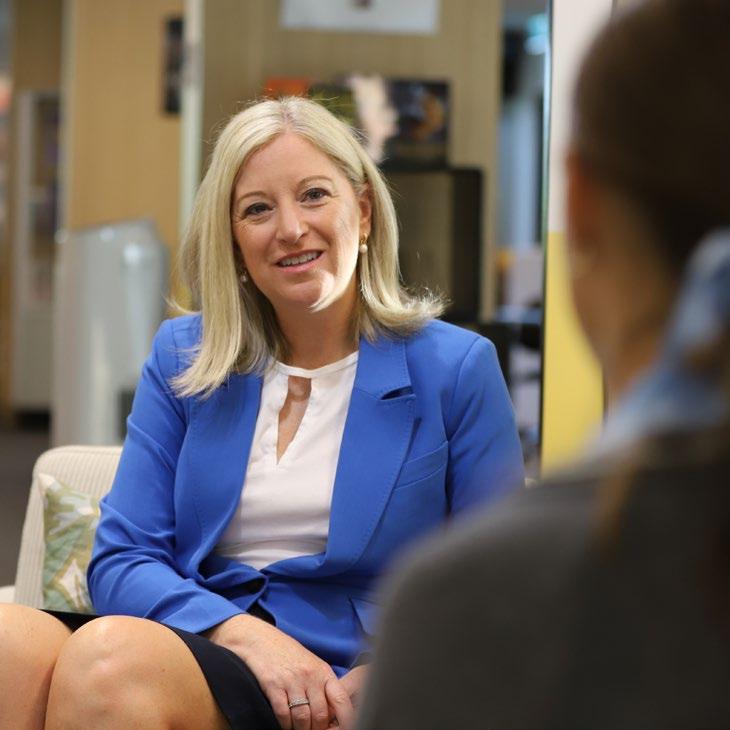

Name: Ms Liv Cher Title: Head of Year 8
Date: 26 May 2023 Strategic Intent: Co-curricular Opportunities
Our Year 8 students developed a sense of self, values, and their own metacognition as they adapted to challenges as part of their Central Australia experience this year.
It was, for so many students, their first foray into independent travel, a moment to connect themselves with country and the stories that first started upon it, to forge new friendships, and create new memories. Reflection was key to this experience, and the words of our students provide great insights. Together, they paint a complete window into the trip.
From Melbourne to Alice Springs (1,858km north west)
Setting off very early on a Sunday morning we were transported from a very chilly and wet Melbourne into the heart of Australia, Alice Springs.
Over two days, the students discovered the beauty of the MacDonnell Ranges (Tjoritja), and the appetiser of sightseeing at Standley Chasm and Simpsons Gap (Rungutjirpa) –though our party of 84 may have scared off the rock wallabies!
“My highlight of the Camp was Simpsons Gap. It was astonishing. The magnificent view made me understand why the First Nations custodians wanted to protect this land so much.”
– Kerry Ren
Alice Springs to Kings Canyon (328km west)
The vast landscape is something to behold in Central Australia. The big skies, desert plains, and neverending rocky ranges. These mind-boggling distances are also the reason that the group formed such a strong bond with their tour guide and bus driver – discovering the great history behind each landform, the people of Central Australia and critical First Nations people’s perspectives and insights regarding the land.
“My highlight of the Camp was the Uluru cycle and the bus rides. Everyone had time to bond with each other to become one big family and sing along to the radio. The tour talks that John gave were amazing and I learnt many new things.”
– Chloe Fei (Chloe) Zhu
Along the journey to Kings Canyon, the students spent time learning about the culture of the Luritja and Pertame people at Karrke. This included bush tucker, medicines, weapons, instruments, and the meaning behind art in the region.
Kings Canyon
Scaling the heights of Kings Canyon proved challenging for some, but a real highlight for many. Completing the four-hour Rim Walk, the treacherous chasm, the sheer size, unfolding beauty and unexpected waterholes captured the eyes, minds, and cameras of our Year 8 students.
“The highlight of my experience was the 6km walk through Kings Canyon. It was so fun, but so challenging at the same time!”
– Grace Champion de Crespigny.
Kings Canyon to Yulara (324km north east)
After being duped into believing we’d spotted Uluru (alas, it was only Mount Conner – Artilla) but then realising there is more than one large red monolith in Central Australia, we arrived at one of the most iconic vistas in Australia, Uluru.
“The highlight of my experience was cycling around Uluru. This was an amazing experience and was so beautiful. I loved hearing the First Nations stories about the landform of the rock, I really found this fascinating.”
– Samantha (Sam) Kudnig
But there are always challenges. How do you handle that?
A pleasing aspect of the experience was the girls recognising their own metacognitive processes when faced with challenges. Understanding when they fell into common thinking traps gave them an opportunity to put in place strategies to adapt and enjoy the trip.
“I fell into the thinking trap of ‘ignoring the good’ when I was on the hike. I ignored the views and focused on being tired. I was thinking I wouldn’t be able to climb the mountain because I wasn’t athletic. What I ignored was that I had an entire group of staff and friends who could help me.”
– Adele Wu
But it is always about the learning?
The opportunity for student growth in the domains of selfefficacy, independence, collaboration, and agency were frequently identified within the students’ reflections.
I will leave you with one final quote from a student reflection which sums up all of the great things experiences like this can provide for each student.
“This Camp was a way to experience a different type of learning. Developing into an independent traveller will aid me in the future for both travelling and for organisation at School. I’ve also thoroughly enjoyed quality time with my friends over the last six days and have been able to make great memories.”
– Louisa Liao

Name: Mr Luke Russell Title: Deputy Head of Junior School
Date: 2 June 2023 Strategic Intent: Co-curricular Opportunities
The curtains have fallen, the stage lights have dimmed, and the echoes of applause still resonate throughout our School.
Our Years 5 and 6 Musical, Seussical JR. was a remarkable success this week. The Musical showcased the talent and determination of our students, cast into groups – Thing 1 and Thing 2 to ensure all our Years 5 and 6 students could participate.
The Jamie and Rebecca Gray Theatre provided the perfect setting for this production. Its state-of-the-art facilities allowed our performers to shine. With well-crafted sets, impressive costumes, and a dedicated crew behind the scenes, the Theatre transformed into a world of imagination and wonder.
The Musical’s plot centered around the mischievous adventures of beloved characters from the world of Dr. Seuss. Horton the Elephant, Gertrude McFuzz, the Cat in the Hat, and a colourful ensemble of others mesmerised the audience. The students’ skillful acting, singing, and dancing brought these characters to life, captivating everyone in attendance. The dedication of our talented casts were evident. They created an unforgettable experience for all to enjoy.
Under the guidance of our devoted teachers, Miss Kirrilly Wootton, Ms Kristen Dhono Isworo, and Ms Lucy Mason, the production came together seamlessly. Their expertise, patience, and passion for the arts were evident in every aspect of the Musical. They mentored and nurtured our students, ensuring they reached their full potential and delivered performances that exceeded expectations.
Production week comprised three shows, each performed over two evenings and one day. The casts worked diligently to perfect their performances, rehearsing extensively to bring their characters to life and deliver a polished production. The commitment and effort of our students is commendable. It was wonderful to witness their perseverance and hard work received with appreciative applause from the audiences across all the performances. We extend our gratitude to the parents, guardians, and friends who supported our students throughout their journey. Your presence in the audience, cheering them on, added to the electric atmosphere and made the experience more special.
As we reflect on Seussical JR. we are reminded of the power of creativity, teamwork, and the magic of live performance. The memories created on stage will last a lifetime for our students, along with the valuable skills they developed throughout the rehearsals and performances.
Congratulations to our Thing 1 and Thing 2 casts, crew, and production team for their achievements. Our Junior School Musical showcased the remarkable talents and dedication of our students and staff in Barbreck. Thank you to everyone involved in making Seussical JR. a memorable success!

Name: Mr Robert Marshall Title: Researcher-in-Residence
Date: 9 June 2023 Strategic Intent: Academic Achievement
The OECD recently published a report Education Policy Outlook in Australia (OECD, 2023) providing a less than satisfactory commentary on Australian education. While observing that Australia continues to perform at or above OECD average in PISA, performance has been in steady decline across reading, Mathematics and Science. However, the disciplinary climate in s chools in Australia was among the least favourable in the OECD according to students’ reports in PISA 2018.
Glenn Fahey, Program Director in Education Policy at the Centre for Independent Studies said the “OECD has handed down yet another disappointing report card on Australia’s school systems. It shows record spending has been paralleled by declining outcomes for both students and teachers. Importantly, the report makes clear a common denominator to school systems’ problems is the increasing disruption and disorder in classrooms. Australia ranks 70th out of 77 on the “disciplinary climate index” – placing it among the least orderly in the world.”
The 2020 AGSA report The Girls School Edge: A comparison of outcomes for girls from single-sex and co-educational schools using PISA data from 2015 and 2018, provides strong support for the value of an all-girls schooling environment and adds to the growing body of international research that shows unequivocally that girls’ schools provide distinct advantages over co-educational schools. In addition to girls’ schools scoring up to 10 percentage points higher on PISA’s 2015 and 2018 academic tests of Science, Mathematics and reading, the AGSA report showed girls’ schools have better conditions for learning. The report says “Single-sex school students are more likely than coeducated girls to report experiencing learning environments in which they are able to fulfill their learning goals due to substantially lower amounts of disruption or distraction.”
A greater proportion of students attending girls’ schools never or almost never experience an English classroom in which they cannot work well compared with girls in co-educational schools (43% to 31%).
More students attending girls’ schools stated they are never or almost never in a Science classroom where they cannot work well (41% to 29%).
Girls at single-sex schools are also less likely to have to wait for their teacher to quiet the class before teaching (33% to 22%).
Effective teachers and school leaders know that successful learning in the classroom is based on the development of a culture characterised by high expectations, provision of clarity about what teachers are to teach and students are to learn, establish strong professional learning communities and leading ongoing efforts to improve teaching practices.
The Australian Council for Educational Research (ACER) developed the National School Improvement Tool (NSIT) which brings together findings from international research into the practices of highly effective schools and school leaders. The NSIT outlines nine distinct domains which high performing schools demonstrate consistently. The third domain, a Culture that promotes learning, states that, effective and high performing schools have “clear strategies to promote appropriate behaviour – including agreed responses and consequences for inappropriate student behaviour – and the school provides sufficient support for teachers to implement these policies.” (Masters, 2016) In addition, “classrooms are calm but busy and interruptions to teaching time are kept to a minimum. There are no obvious behavioural problems, very high rates of school attendance and engagement, and staff morale is sustained at a high level.” Effective student learning requires a classroom culture which is not disruptive and permits students to participate without undue distraction or inhibition.
Monash University academic Erin Leif commented on the OECD report regarding the issue of class disruption, that the survey suggests Australian students perceive their classrooms to be more disruptive than they have in the past. It also implies one of the reasons teachers are choosing to leave the profession is disruptive behaviour. Leif adds that “post-COVID, teachers have reported student behaviour appears to be getting worse, with students more distracted and less engaged than before the pandemic began.” In girls’ schools, the research evidence strongly supports a more positive and less disruptive environment than co-educational schools.
There are several reasons why girls-only classes may be less disruptive than co-educational classes.
Reduced gender stereotypes and expectations: In co-educational classes, students may be more likely to conform to gender stereotypes, such as boys being rowdy and disruptive, and girls being quiet and studious. In girls-only classes, these expectations are reduced, allowing students to focus on their learning without the pressure to conform to gender norms.
Improved confidence and self-esteem: Research has shown that girls may be more likely to participate in class and take risks in a single-sex environment. This is because they may feel more comfortable speaking up and expressing themselves without fear of judgment or ridicule from their male peers.
Reduced competition for attention: In co-educational classes, boys may dominate classroom discussions and activities, leaving girls with less opportunity to participate and contribute. In girls-only classes, girls have equal access to the teacher’s attention and are more likely to take an active role in the learning process.
Increased motivation: Girls-only classes may provide a more supportive and collaborative environment, which can increase motivation and engagement in learning.
Girls may be more willing to take on challenges and work collaboratively with their peers without feeling judged or overshadowed by male classmates.
Reduced sexual harassment: In co-educational classes, girls may experience sexual harassment and unwanted attention from male classmates. This can be distracting and disruptive to their learning. In girls-only classes, girls are free from this type of harassment and can focus on their studies without fear of being objectified or harassed.
Improved academic performance: Research has shown that girls may perform better academically in single-sex environments. This may be due to reduced distractions, increased participation, and improved self-esteem and confidence.
While the OECD report provides interesting commentary on Australia’s education system, it is the underlying classroom culture of girls’ schools that provides a point of difference in educational outcomes.
References
Fahey, G. (2023, April 15). Old-school’ class management skills empower teachers. Retrieved April 17, 2023, from The Australian: https://www. theaustralian.com.au/inquirer/oldschool-class-management-skillsempower-teachers/news-story/47cb8dda86ec1933a2baf30a03a37c95
Leif, E. (2023, April 11). Australian classrooms are among the ‘least favourable’ for discipline in the OECD. Here’s how to improve student behaviour Retrieved April 20, 2023, from The Conversation: https://theconversation. com/australian-classrooms-are-among-the-least-favourable-for-disciplinein-the-oecd-heres-how-to-improve-student-behaviour-202946
Masters, G. (2016). National School Improvement Tool. Retrieved April 17, 2023, from Australian Council for Educational Research: https://research. acer.edu.au/cgi/viewcontent.cgi?article=1019&context=tll_misc
MMG. (2020). A comparison of outcomes for girls from singlesex and co-educational schools using PISA data.
Alliance of Girls’ Schools Australasia. Retrieved April 18, 2023, from https://www.agsa.org.au/reports-about-girls-education/ OECD. (2023). Education policy outlook in Australia. Paris: OECD Publishing. doi:https://doi.org/10.1787/ce7a0965-en.

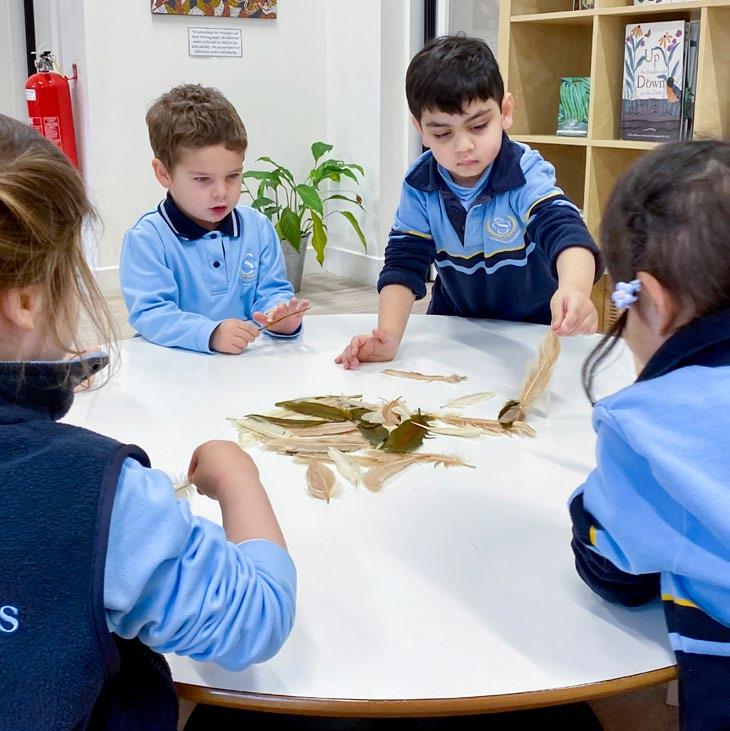
Name: Ms Sarah Bethune Title: Head of Early Learning
Date: 16 June 2023 Strategic Intent: Embracing our Community
Our Early Learning Programs are supplemented by opportunities for the children to participate in experiences as a way of connecting with community. Throughout the year, a selection of experiences are planned within our ELC and in the wider community.
There are times when we invite an expert to join us in Campbell House to implement a workshop with the children where they share their knowledge and resources. These opportunities are carefully designed to connect with, and support, the children’s current learning and inquiries.
This week we welcomed First Nations Educator, Emmy Webbers, from Wurruck Yambo to our Early Learning Centre to share her First Nations language, culture, and history with our children. Emmy introduced the children to the culture and history of the Wurundjeri people by sharing the stories Bunjil and Wilam. Props were used to accompany the stories so the children could engage in interactive storytelling and learn some of the Woi Wurrung language used in the stories.
Following these stories, the children engaged in a session exploring the movements of the animals in the stories.
To conclude, the children created clay models of Bunjil and drew First Nations symbols. Learning about First Nations culture and history will continue in the children’s classrooms as they re-visit and extend upon the conversations and experiences from their workshops with Emmy.
As part of the children’s learning through Reconciliation Week, we recently connected with the organisation, Children’s Ground to celebrate Wear it Yellow Day. The children wore casual clothes with a touch of yellow and donated money to Children’s Ground to help provide First Nations children with educational and wellbeing opportunities. This was another wonderful opportunity for our children to further extend their learning about First Nations culture and their awareness of community.
Experiences such as these provide incredibly enriched opportunities to extend our children’s learning, connect with experts and engage with the community. They expose the children to a range of new and different experiences and help them to make sense of the world in which they live.
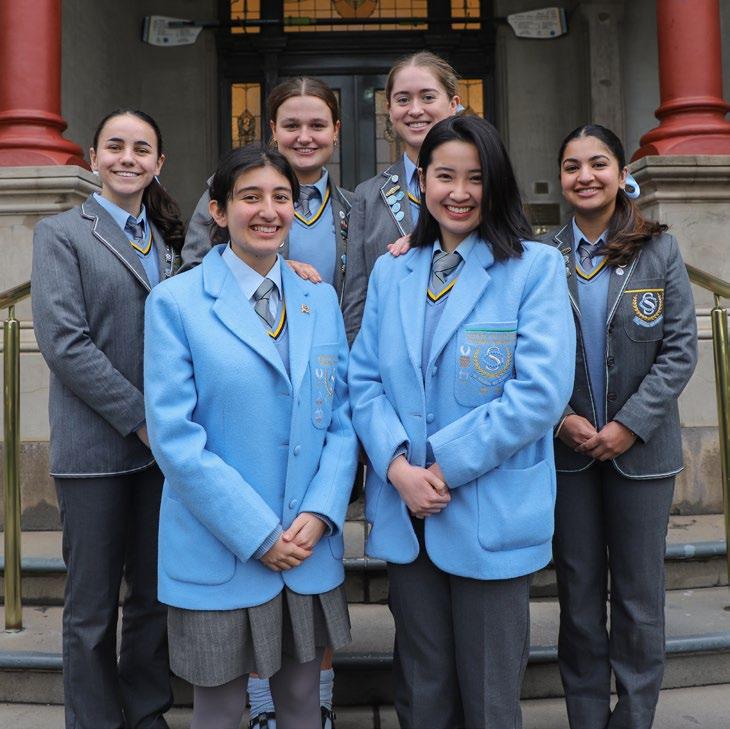
Name: Mr James Brown Title: Student Leadership – Program Lead
Date: 23 June 2023 Strategic Intent: Student Leadership
At St Catherine’s School, the importance of Student Voice is not just a concept, but a reality that is actively embraced through various activities and initiatives.
This semester has seen the consolidation of a range of student-led activities and initiatives, along with the introduction of VOICE (Voice, Ownership, Inclusion, Compassion, Empowerment, Strength) sessions on Friday afternoons.
Our six Student Executive members, Ava Colosimo, Flora Du, Freya Cantwell, Diya Kayick, Lucia Tabbagh and Jemima Wilcox, play a crucial role in shaping the school’s culture. Their regular meetings involve planning and developing the segments and running sheet for weekly assemblies, discussing ideas for the Student Representative Council (SRC), and addressing other School-related matters. This collaborative effort ensures that student ideas, celebrations and concerns are recognised and acted upon daily.
Student-led assemblies have been a feature of Monday mornings for the last three years. These efforts demonstrate the commitment of students to making assemblies engaging and informative for the entire School community. Each week has a theme or central idea at its core, such as Harmony Day, ANZAC Day, Environment Assembly or Humanities Assembly, to name but a few. The Student Executive, alongside various Captains organise the content, including guest speakers, to make assemblies relevant, educational, and entertaining for everyone in attendance.
Our student newspaper, Stentorian (meaning: of a person’s voice, loud and powerful), is another avenue where students express their thoughts, ideas, and creativity.
The editors and contributors work diligently to produce a high-quality publication that reports on national and world events, as well as School events and achievements, and includes illustrations, movie, and book recommendations, and even horoscopes. By promoting the newspaper through
the School’s communication channels, students have the opportunity to share their voice with the wider community.
To foster inclusivity and engagement among students, regular Student VOICE sessions now run on Friday afternoons. These sessions are planned and organised by the Student Executive, House Captains and CoCurricular Captains, alongside other student leaders.
Their collaborative efforts ensure that a variety of activities are offered – such as a ‘Junk Kouture’ recycled fashion show, House Spelling Bee and Hide and Seek, Indigenous Tabloid Games, Community Service initiatives, and many others. These sessions allow for students in different Year levels to work towards a common goal.
The Leadership Diploma program is designed to develop students’ leadership skills and encourage active participation in the School community.
Students in Years 9 and 10 undertake various leadership activities, to set goals and reflect on their experiences in co-curricular pursuits, camps, and community service. The Leadership Diploma Program is unique to St Catherine’s School and empowers students to take ownership of their personal and leadership growth.
Year 10 students have the option to embark on a Dark Blue Leadership Diploma, which is a small group-based community service initiative run within the School to support a charity of their choosing.
In 2023, Year 10 students have already run fund and awareness raising campaigns across both the Junior and Senior School in service of Very Special Kids, St Kilda Mums, Daffodil Day, The Pyjama Foundation, Do it for Dolly and The Humane Society.
The Student Representative Council (SRC) serves as a platform for students in Years 7 to 12 to voice their ideas and concerns.
Regular meetings are held and chaired by the Student Executive, providing an opportunity for student-led discussions and the presentation of areas of improvement and activities that are inclusive and aligned with the School’s values.
The Charter and planning documents outline the purpose and goals of the SRC, while the ongoing involvement of students strengthens the impact of their collective voice.
This year, along with some more pragmatic areas of attention, the SRC planned a celebration of Harmony Day with a Cultural Dress Day. Students were invited to wear items of cultural significance from their countries of heritage and had the opportunity to attend traditional cultural dance workshops.
These activities and initiatives highlight the dedication and commitment of students in making their voices heard. Through their active involvement in the Student VOICE Program, our students actively shape their educational experiences and contribute to the development of a vibrant and inclusive School community.
The first semester has shown us that when students are given the opportunity to express their voices, they become catalysts for positive change, inspiring others and shaping the future of our School.
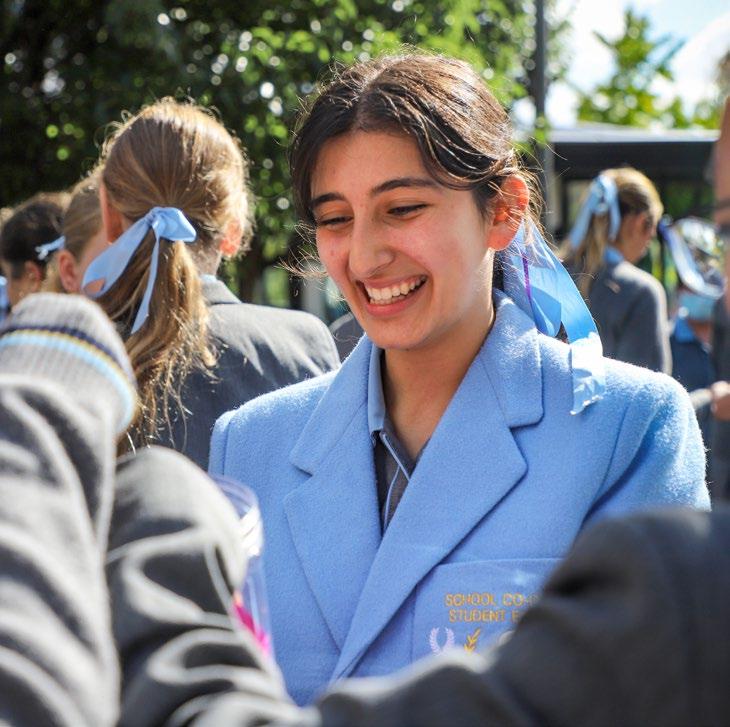

Name: Mr Robert Marshall Title: Researcher-in-Residence
Date: 9 July 2023 Strategic Intent: Academic Achievement
Parents place great faith in trusting St Catherine’s teachers to support and nurture their daughters. This is a trust we take very seriously. So, how is Barbreck travelling? Are we doing the best for our students? Are our teachers using highly effective classroom practices consistently? We thought it important to find out the answers to these questions.
St Catherine’s Barbreck Teaching and Learning Framework adopts a Gradual Release of Responsibility teaching model. This is characterised by a teaching methodology of ‘I Do, We Do, You Do’ which includes explicit instruction and describes the approach teachers adopt in their classrooms.
This type of teaching is supported by extensive research evidence which shows this methodology to be highly effective. To assess the model’s effectiveness within Barbreck a review was undertaken to determine the level of success our Barbreck teachers have had implementing this teaching initiative.
Prior to my employment at St Catherine’s, I was the Project Director for School Improvement at the Australian Council for Educational Research (ACER). My role there was to conduct reviews of schools across Australia and internationally. Reviews were conducted using the School Improvement Tool (SIT) which identifies practices of highly effective schools, including schools that have undergone substantial improvement.
The SIT is based on extensive research evidence and conversations with school leaders and teachers across Australia. The SIT does not describe everything that effective schools do but focuses on those practices that are most directly related to school-wide improvements, and thus outcomes for students. A key feature of the SIT is the set of performance levels – Low, Medium, High, and Outstanding. In my time at ACER, very few schools met the outstanding criteria.
The review process for Barbreck was undertaken using the SIT. In conducting the review, I interviewed every Barbreck teacher, examined teaching plans and assessments, observed teaching, and noted what students were doing in class.
The review found that all teachers at Barbreck are consistently utilising the ‘I Do, We Do, You Do’ teaching method. All teachers were consistent in their conversations and displays of other evidence, which demonstrates a level of embedded behaviour across the campus.
Utilising the SIT performance levels, our review revealed that Barbreck is performing at an Outstanding level. In particular, it was observed that at Barbreck:
• School leaders and staff demonstrate a strong conviction that improved pedagogical practice is the key to improved student learning.
• School leaders and teachers are committed to identifying, understanding, and implementing effective teaching practices.
• Teaching strategies that have been demonstrated through research and practice to be highly effective are prioritised.
• There is an explicit expectation that all students are actively engaged, and appropriately challenged.
• Deep learning is enabled through a shared understanding of learning intentions and what quality looks like, progressively building students’ conceptual understanding.
The behaviours listed above are what highly successful schools demonstrate. Our Barbreck teachers are consistently demonstrating these behaviours.
Our exemplary NAPLAN data shows our students are achieving at a standard well above state and national levels. This is no surprise when the behaviours described by ACER’s School Improvement Tool are demonstrated consistently every day in every class in our Junior School.
Apart from observing the above behaviours, what excited me most during the review process was my observation of Barbreck teachers who love the students they teach and enjoy what they do. Barbreck teachers support each other, are collaborative and endeavour to make their classrooms the best they can be,
So, the answers to the questions posed at the beginning of this article: How is Barbreck travelling? Are we doing the best for our students? Are our teachers using highly effective classroom practices consistently? The research says yes, absolutely!

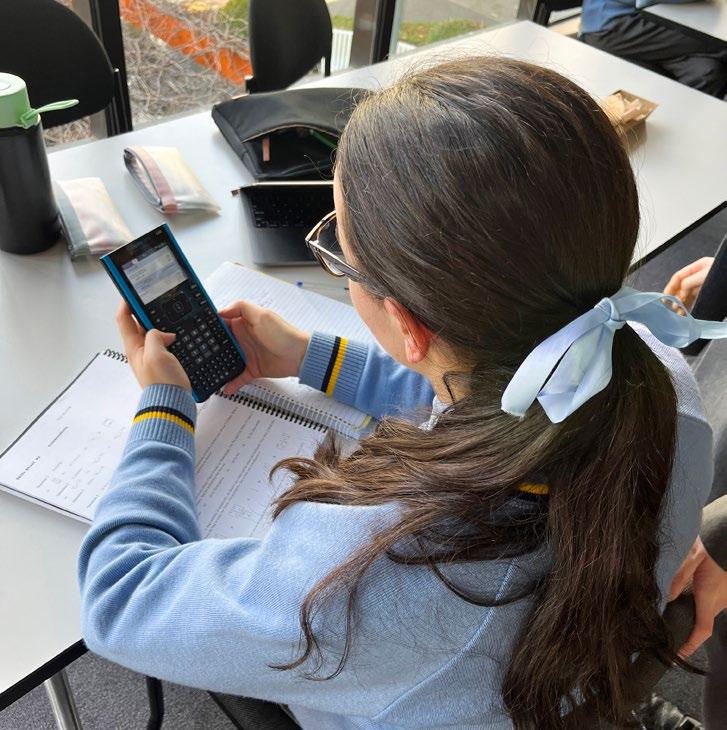
Name: Ms Danae Salipas Title: Head of Mathematics
Date: 21 July 2023 Strategic Intent: Academic Achievement
In St Catherine’s Senior School our Mathematics curriculum is based on supporting our students with a sequential development of mathematical concepts from Year 7 through to Year 12.
In Year 10 there is an intentional focus on the requirements of VCE Mathematics, to best prepare and expose our students to the concepts, ideas, and skills they will be required to undertake in VCE Units 1 to 4 subjects in Years 11 and 12. This early preparation sees much greater success for our Years 11 and 12 students across all three VCE Mathematics subjects – General Mathematics, Mathematical Methods, and Specialist Mathematics.
Another area of early preparedness at St Catherine’s is introducing the TI Nspire CAS Calculator into our Mathematics classrooms in Year 9. The CAS Calculator (Computer Algebra System) is used by millions of students across schools in Australia. The technology provides greater functionalities than the scientific calculator and can be used to plot graphs and solve more advanced equations. To be successful in VCE General Mathematics, Mathematical Methods, or Specialist Mathematics, all students must be competent in their use of the CAS calculator.
The 2023 changes to the Mathematics Study Design include more emphasis on the use of the CAS technology. All three VCE Mathematics subjects now have larger weightings on Examination 2 (CAS Calculator permitted). Therefore, having a thorough understanding of how to use this piece of technology is imperative for our Mathematics Faculty to ensure our students succeed in Mathematics.
Introducing the CAS Calculator in Year 9 exposes our students to the use of this technology earlier, providing them with more time to develop and master their skills solving problems using the CAS.
Our Mathematics Faculty prides itself on maintaining a high competency level in not only the Mathematics curriculum we deliver but also the use of the technology to support our students’ mathematical knowledge.
In early Term 2 our Mathematics Faculty attended professional development training with Texas Instruments, the developers of the TI NSpire CAS Calculator. The training provided the latest tips and tricks on using the CAS as well as consolidating our staffs’ skills using the technology.
Of great benefit for all our Years 9 to 12 students was the opportunity for our Mathematics staff to become students during their training. Staff were required to use the CAS calculator to master various shortcuts and strategies when manipulating expressions, sketching graphs, and solving complex problems on the graphics calculator, just as our students are required to do.
These insights and training have enhanced the knowledge and expertise of our Mathematics staff and will provide our students with a deeper understanding of the CAS, which will ultimately lead to greater success in their VCE Mathematics subjects.
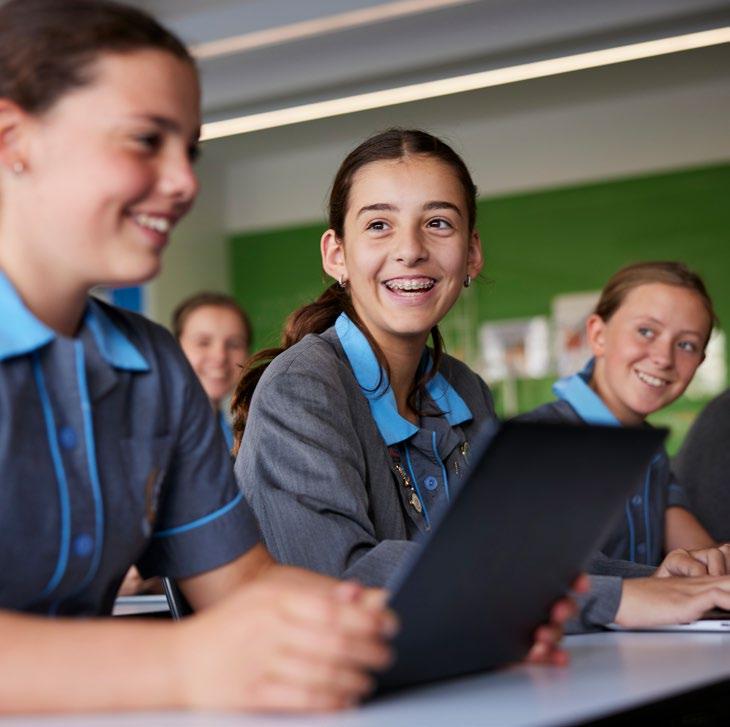
Name: Michelle Carroll Title: Principal Date: 28 July 2023 Strategic Intent: Academic Achievement
At St Catherine’s, our Student Representative Council (SRC) holds immense value and provides students with opportunities to find their voices, enabling them to express their opinions, concerns, and aspirations. Cultivating this sentiment carries forward into every St Catherine’s classroom and is specifically targeted in our Year 9 Humanities Program. The Critical Conversations Program adopts a Harknessinspired format designed to elevate the communication, collaboration, and problem-solving skills of our girls, and ultimately prepare them for future leadership roles in various spheres of life.
This notion of ‘finding her voice,’ was given even greater clarity when I read research provided through the International Coalition of Girls’ Schools. The topic of the research focused on female students who identify as feeling less confident sharing minority views in co-educational environments.
“Research from global analytics company, Gallup, has found that female university students are less likely than male students to feel comfortable sharing their views in a classroom when they perceive that their views may conflict with the opinions of their peers. In a coeducational environment, this can mean that young women are less confident to share their minority views in front of male students. So, despite young women now forming a majority of students on American university campuses, Gallup says there is a gender gap in how young women interact in the classroom.”
In response to the Gallup findings, Julie Park, Associate Professor of Education at the University of Maryland, told Inside Higher Ed Magazine that she was not surprised that some female students do not feel comfortable speaking out in the classroom, given the current issues of ‘climate,’ stating that, “There may be environments where male students try to dominate the conversation. Ideally, we’d like to see all our students feeling comfortable to speak up, but because of issues of inequality, that might not always be the case.”
The Gallup study sought to verify how comfortable students feel about expressing themselves in the classroom. The company surveyed more than 5,100 recent graduates who earned bachelor’s degrees between 2010 and 2018. Graduates were asked to identify, on a five-point scale, whether they felt comfortable sharing ideas or opinions in their university classroom that they believed were held by a minority of people.
The results showed that 58% of female graduates agreed, or strongly agreed, that they felt comfortable sharing a minority opinion, compared with almost 70% of males. At the other end of the scale, 17% of females and 8% of males agreed or strongly agreed that they felt uncomfortable sharing minority opinions.
These findings are consistent with previous research showing that females are less likely than males to ask questions during academic seminars. This “gap in comfort” means that the university experience of many females is undermined because they are reluctant to share their opinions.
In our Year 9 Critical Conversations Program, learning through a Harkness-inspired method stimulates critical thinking as a routine to draw out ideas with reasoning and logic. The goal is for students to solidify their knowledge of the case by thinking critically under pressure. It also works to reduce the passivity of students within the classroom setting, with students undertaking an increased level of pre-reading in readiness for each lesson.
Such teaching practice has encouraged girls to consider others’ opinions and build the confidence of all students to respond in class, to find their voice, and respect the diversity of views of others.
This research speaks volumes for the benefit of an allgirls’ education and the distinct advantage of an all-girl environment. At St Catherine’s such gender issues are acknowledged by our teaching staff with effective
strategies enacted and embedded within the School culture and classrooms. For example, a focus on encouraging girls’ natural strengths or talents, whether its Mathematics, Soccer, Chess, or Music is always prevalent. When girls feel confident, it acts as a touchstone to build confidence in other areas of their lives.
A school climate that allows girls to speak out, speak often and feel comfortable in doing so is vital to the overall health of classroom culture. It is considered a priority in developing our confident, capable, and happy students.
With my SRC opportunity this term, I hope to also build a vital link between our student body with teachers and the Senior Leadership Team. I am very much looking forward to the constructive dialogue, allowing students to collaborate with the aim to instil a sense of ownership and investment in our School environment, nurturing a positive and conducive atmosphere for personal and academic growth.
References
Bauer-Wolf, J. (2019, June 3). ‘Speaking out in the classroom,’ Inside Higher Ed. Retrieved from: ale-are-ease-sharing-uncomfortable-views
Jaschik, S. (2019, February 18). ‘Should white boys still be allowed to talk?’ Inside Higher Ed. Retrieved from: https://www. insidehighered.com/news/2019/02/18/essay-about-how-white-malestudents-dominate-discussions-sets-debate-dickinson-and
Marken, S. & Matson, T. (2019, June 3). Inclusive environments produce attached alumni. Gallup. Retrieved from: https://www.gallup.com/ education/257939/inclusive-environments-produce-attached-alumni.aspx


Name: Mr Luke Russell Title: Deputy Head of Junior School
Date: 28 July 2023 Strategic Intent: Student Leadership
As part of our dedicated commitment to fostering leadership qualities in our students, we believe that all Year 6 students are leaders in Barbreck.
We entrust them with the responsibility of setting high standards and leading by positive example, epitomising the values of a St Catherine’s girl.
To empower our students to become confident, responsible, and compassionate leaders, we have implemented our Ambassador Program, which actively involves all our students in developing essential leadership skills. Furthermore, some students take on dedicated captaincy roles, providing them with additional opportunities to enhance their leadership experiences.
This week’s Year 6 Study Tour to Canberra has been an exciting and enriching experience for our young leaders. During their time in Canberra the girls delved into our nation’s rich history, explored the principles of democracy, and engaged in discussions about effective leadership.
One of the highlights of the Study Tour was the visit to Parliament House. Students participated in a parliamentary role-play lesson – simulating the process of introducing a bill, engaging in passionate debates, and casting votes, using the debating techniques they had homed in Debating Club at School. This hands-on experience allowed the girls to understand the complexities of governance and decision-making in a real-world setting.
Additionally, the trip to the Royal Thai Embassy was a memorable and inspiring experience for our students. Meeting Her Excellency Ms Arjaree Sriratanaban, the Ambassador of the Kingdom of Thailand to the Commonwealth of Australia, and the other warm and welcoming diplomatic staff, provided our girls with valuable role models and inspiration as aspirational leaders.
During their time at the Embassy, our students immersed themselves in Thai culture and explored the historical aspects of Thai and Australian foreign relations. Learning some Thai language and participating in traditional Thai dancing added to the enjoyment and educational value of the visit.
We extend our heartfelt gratitude to Year 6 parent, Mrs Tessa Sullivan, whose support, and assistance made this visit possible. It undeniably enriched the overall experience of the Study Tour and will be a cherished memory for our students in the years to come.
Beyond the academic aspects, the Study Tour provided a platform for our students to openly discuss and share their newly discovered aspirations for their own futures. We are proud to say that we have future leaders and potential politicians amongst our talented students in Barbreck, and we are committed to nurturing and supporting them on their leadership journeys.
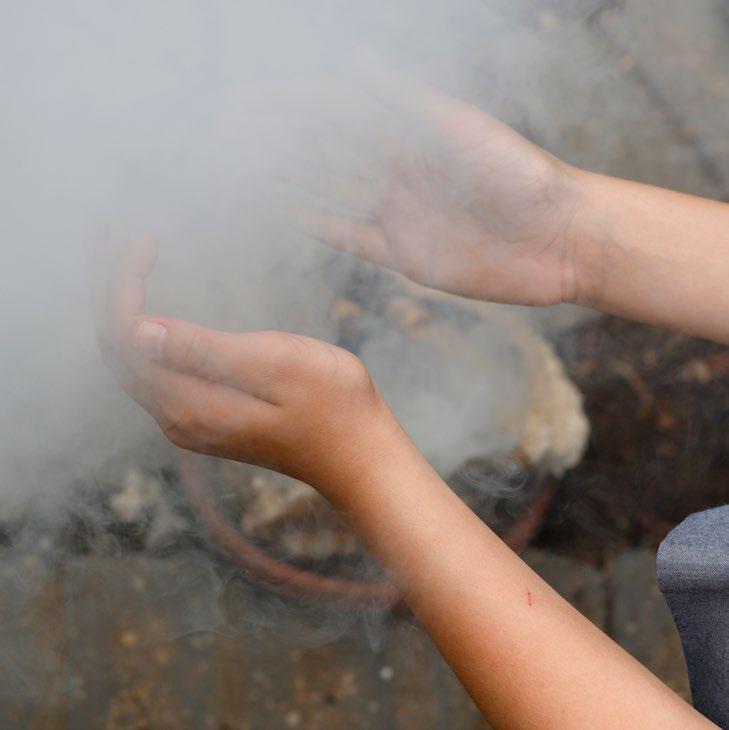
Name: Mrs Gina Peele Title: Deputy Principal – Student Programs
Date: 28 July 2023 Strategic Intent: Embracing our Community
Upon the return to School for Term 3 our students celebrated NAIDOC Week in a combined Junior and Senior School Assembly.
Traditionally celebrated during the school holidays from 2 to 9 July, national NAIDOC Week celebrations are held across Australia to celebrate and recognise the history, culture, and achievements of First Nations peoples of Australia.
NAIDOC Week is an opportunity for all Australians to learn about First Nations cultures and histories and participate in celebrations for the oldest, continuous living cultures on earth.
Our Year 12 Student Executive led the NAIDOC Assembly, which also included reflections from Year 8 students, Olivia Grasso, Tiffany Shen, and Samantha Kudnig on their experiences during the Central Australia Camp and what they learnt about Australia’s First Nations people and cultures.
NAIDOC stands for National Aborigines and Islanders Day Observance Committee. NAIDOC is traced back to the Aboriginal groups of the 1920s who sought to raise awareness in the wider community of the status and treatment of Aboriginal and Torres Strait Islander Communities.
St Catherine’s School’s Reconciliation Action Plan was created in 2021, after considerable planning and community engagement. A Reconciliation Action Plan (RAP) is a formal statement of commitment to reconciliation. At St Catherine’s School, we value the rich cultural heritage of Aboriginal and Torres Strait Islander peoples and respect their deep and abiding connection with the Land. We acknowledge the Wurrundjeri people as the Traditional Owners of the Land upon which our School is built and, with their guidance, we seek to further our appreciation of their custodianship of the Land so that we may share this responsibility with them.
As part of our Reconciliation Action Plan, we are committed to learning about reconciliation in Australia. To further develop our knowledge, we are working in partnership with the University of Melbourne, as part of the Ngarrngga Project. Ngarrngga is a Taungurung word meaning ‘to know, to hear, to understand.’ The Ngarrngga vision is for all Australian students to have the opportunity to deeply connect with Aboriginal and Torres Strait Islander knowledge systems, histories, and cultures.
The Ngarrngga Project is creating innovative curriculum resources for educators to facilitate in their classrooms, in addition to professional development. This is a signature project for the University of Melbourne and a collaboration with the Melbourne Graduate School of Education, Indigenous Studies Unit, and Indigenous Knowledge Institute. The teaching resources are based on evidence and created by Indigenous Knowledge experts and teachers.
The Ngarrngga Project aims to:
• Expand Resources
• Build intercultural competency
• Embed teaching practices
A group of St Catherine’s staff will participate in this Program to further develop their knowledge of First Nations histories and cultures and use the Ngarrngga resources in the classroom enabling the teaching of reconciliation, concepts, histories, and cultures within our curriculum.
We look forward to working with the University of Melbourne as part of the Ngarrngga Program, commencing in Term 4.
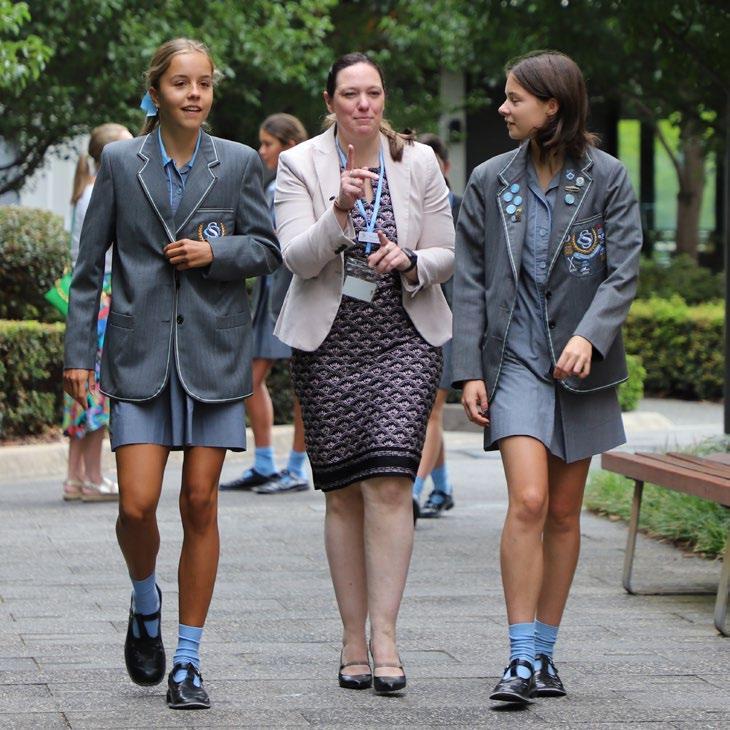
Name: Ms Freda Armstrong Title: Director of Middle Years
Date: 4 August 2023 Strategic Intent: Exemplary Staff
With the release of the 2023 NAPLAN results to schools last week, coinciding with the majority of schools publishing mid-year academic reports, student, teacher, and school performance is hot on the agenda and front of mind for many parents.
So, you might be wondering what teachers at St Catherine’s actually do with all the data we receive?
Student progress can be mapped in a myriad of ways using a wide variety of data sources.
At St Catherine’s, we place a high value on the observations and assessments conducted by the classroom teacher. After all, they know their students best, and know when they are performing at their best.
Teachers also have a deep understanding of how individual students are progressing compared to other students in the same class and Year level. They know how they are progressing compared to other cohorts of years gone past and they know how to make adjustments to respond to this progress – to either stretch or support as required.
The external testing completed at St Catherine’s on the other hand, provides teachers and School leaders with a one-point observation. That is, how the students performed on one test, administered on one particular day.
This kind of testing is useful if we want a snapshot of our Cohorts and to compare them to other similar-aged cohorts from around Australia. This can be helpful when evaluating programs or if looking to identify gaps in learning that otherwise might not have been evident with internal testing.
The external assessments conducted at St Catherine’s includes NAPLAN (Years 3, 5, 7, 9), AAS (Years 8, 10), and other individual assessments conducted on an as-needs basis.
It is important to keep in mind that such scores are only one part of a student’s education. What external testing does not show is short-term progress. It does not show the full picture of the whole child, nor does it measure a student’s potential or mindset.
At St Catherine’s, we place far greater value on the character dispositions which are woven into all areas of a student’s experience whilst in our care. They are at all times encouraged to be Bold, Creative, Independent, and Resilient.
In many respects this is a far more valuable marker for student progress and growth than any one-point testing result. Education extends far beyond progress made in academics and skills-based learning.
So, what does St Catherine’s do with all this data?
After each round of internal or external testing is completed, the data is made available to various Leaders in the School to analyse. The exact type of analysis will vary based on each Leader’s portfolio. For example, a Head of Year will likely be interested in the overall progress of individual students in terms of who needs extending, who needs support, who is tracking up or down?
Whereas the Mathematics Faculty might focus on the scores in numeracy and ensure all students have a thorough understanding of a particular skill. Or the English Faculty might target students of a particular Year level for a spelling program.
What can the data look like?
The best use of data comes when we use it as a comparative tool.
For example, a graph showing a particular Year level’s GPA (Grade Point Average) scores, that is the overall average score based on the average scores obtained in each subject for each student in that year, could be displayed as a boxplot like this:
GPA Data Semester 1, 2023
NOTE: Any outliers present have been excluded from both this boxplot and future boxplots shown in this article.
Mildly interesting.
Yet, if we now put that same boxplot on a scale as the average GPAs for students of the same Year level over the previous two years, we now can start making some meaningful observations.
GPA Distribution Semester 1, 2021-2023
Observe the median line (the horizontal line in the middle of the box). This is the middle value of GPAs for that Year level, meaning that half of the students scored above this value, and half of the students scored below this value.
The interesting part is that this value is increasing!
But is this increase just a result of random variation? Or can we use data from other years to help explain what might be happening with our students’ overall progress?
When plotting the graphs of other Year levels, we found similar trends across every Cohort. The median GPA scores had all increased.
This indicates that there is an association between year and average GPA scores. The change is unlikely to be the result of random variation. That is, GPA scores at Years 7 to 10 have increased from 2020 to 2022.
This is great news.
We do not rest there though.
The next step is to look at the external data to see if this increasing trend is just a reflection of internal marks, or if the students are also displaying an increase in particular competencies when compared to other cohorts from across Australia.
That analysis is trickier to conduct as we are no longer comparing apples with apples. Internal GPA data is measuring something completely different to external NAPLAN and AAS testing.
However, it is clear from the external data that in general the reasoning skills and overall performance in Mathematics and English are indeed increasing, allowing our School Leaders to draw the conclusion that our academic programs and interventions are having a positive effect of student outcomes.
For a school with already exceptionally high academic achievement at Year 12, this smallscale analysis is very encouraging.
Where to from here?
The Middle Leaders (Heads of Year and Heads of Faculty) will meet to evaluate and review the data with their deep knowledge of students, curriculum and how students learn. From this, deeper analysis will be undertaken to draw further conclusions and inform future planning.
Together, our team will unpack why this performance increase might be happening so our teachers can know with confidence where the success is coming from. This allows our School to review our academic care, curriculum, and student programs with a focus on evidence informed decision making.
Through this data and its analysis by our expert educators we can ensure the right distribution of School resources into our programs for all the right reasons. Most importantly, the data and subsequent analysis allows us to continue to deliver optimum academic care for every student that is purposeful and differentiated.

Name: Miss Debra Thompson Title: Head of Health and Physical Education
Date: 4 August 2023 Strategic Intent: Co-Curricular Opportunities
Our newly refurbished Sports Centre has generated great excitement around our School, with staff and students embracing the new facilities. The Sports Centre has state-of-the-art fitness equipment, providing an outstanding space for students to engage in physical activity before and after school, during lunchtimes and within their Physical Education subjects, co-curricular programs and for our Athlete Development Academy.
As part of their Physical Education curriculum our Year 9 Cohort explore the range of components of fitness. The new Sports & Conditioning Studio has now become the focal point for this element of their classroom learning.
As their confidence with the equipment increases, the Year 9s are developing skills to work independently, focusing on creating individualised strength and conditioning programs to increase performance in their chosen sport.
Working in the Sports & Conditioning Studio has increased the girls’ comprehension of the significance of muscular power and strength, flexibility and other crucial fitness components that contribute to overall physical health.
Our VCE Physical Education students, who explore content such as the cardiorespiratory system’s response to physical activity and the chronic adaptations of the body to exercise, are also benefiting from using the new Sports Centre facilities.
Another noticeable and positive change is how students and staff have been actively utilising the Sports Centre during their free periods. It has quickly become a popular place for students seeking physical activity and a chance to socialise in a healthy environment. Whether it is engaging in light weight workouts, walking, or running on the treadmills or using the cross-trainer, it has become a hub for fitness, exercise and overall health and wellbeing and connection.
The use by teachers during their lunchtime and free periods is working to foster a culture of health and wellness throughout St Catherine’s. A sense of camaraderie that extends outside of the classroom is fostered by this shared environment, promoting relationships between students and faculty, and further strengthening St Catherine’s close-knit community.
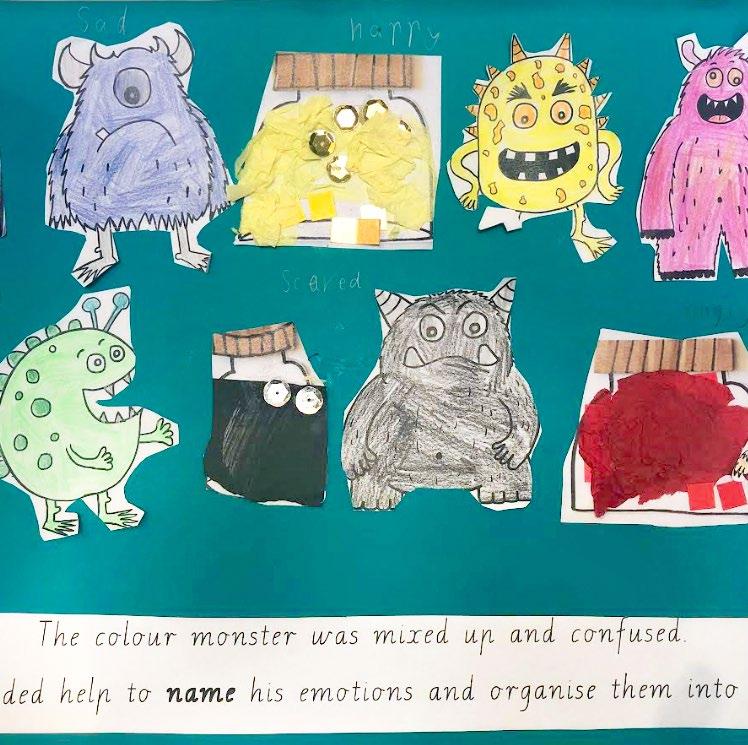
Name: Mrs Courtney O’Brien Title: Year 1 Teacher
Date: 11 August 2023 Strategic Intent: Student Wellbeing
In a world filled with emotions, teaching children to name and understand their feelings is a vital life skill. The acclaimed children’s book, The Colour Monster by Anna Llenas, provides a powerful and imaginative tool for nurturing emotional intelligence in young minds.
The story revolves around the Colour Monster, tangled in a web of mixed emotions represented by different colours. As the friendly monster sorts through his feelings with the help of a young girl, the book beautifully illustrates how acknowledging and naming emotions can lead to a sense of calm and clarity.
Emotion naming equips children with essential tools for their emotional wellbeing. By recognising and expressing their emotions, they develop better self-awareness and interpersonal skills.
This ability helps children navigate challenging situations, communicate effectively, and build stronger relationships. In Barbreck these skills are developed across all areas of our programs, most notably during our Wellbeing lessons.
The Colour Monster is a valuable conversation starter, encouraging parents, teachers, and caregivers to engage children in open discussions about emotions.
Through the colourful journey of the Colour Monster, young readers learn that emotions are natural and manageable, fostering a healthier emotional landscape that will serve them throughout their lives.

Name: Ms Liv Cher Title: Head of Year 8
Date: 11 August 2023 Strategic Intent: Co-curricular Opportunities
Discovering your true sense of self, also known as Identity Achievement, has been found to be a predictor of psychological wellbeing. But how is it achieved? Head of Year 8, Ms Liv Cher shares current research into how the adventure of experience during adolescence and early adulthood craft our passions and interests into adulthood.
Identity achievement is “a cognitive process that refers to exploring an identity and developing an understanding of the meaning of that identity in one’s own life” (Ghavami, Fingerhut, Peplau, Grant, Wittig, 2011). It describes a stage of life where a person discovers and finds their true sense of self. This occurs in adulthood after a person has travelled through a variety of life experiences and passed through the identity development stages of adolescence. Identity achievement is a predictor of psychological wellbeing (Waterman, A.S., 2007).
What is critical to understand is that identity achievement is more than a mere end point. It is a journey that begins in childhood and is often carried through to early adulthood. The main developmental stages occur between the ages of 10 and 19. Identity achievement cannot be realised without a variety of life experiences and periods of change (Practical Psychology, 2019). Thus starts the adventure of experience, or what I like to call Choose Your Own Adventure.
Stages of life can often be compared to a book, with each chapter representing a new experience, opportunity, or challenge. Similarly, the journey of one’s education and personal growth can be likened to a “choose your own adventure” story, where the decisions made can influence character development and shape the narrative for the protagonist, as a learner and as a human being. These choices provide students with agency to choose experiences in which to develop their self-efficacy and ultimately work towards identity achievement.
Setting the stage for where the girls’ Senior School story begins, our first chapter of Years 7 and 8 involves extensive
discussions on developing our identities and thinking about our legacies as members of the St Catherine’s community. These discussions take place during our weekly Wellbeing and Academic Advisory Sessions.
Students navigate opportunities and make decisions about their commitment and participation in academic and co-curricular competitions, soirees, clubs, sports, camps, ensembles, the play, and the musical.
The choices students make here can forge paths of passion, help them recognise their strengths, teach them new skills, create connections, and ensure they are recognised by their community for their outstanding talents.
It often helps them find their voice and understand the benefits of balance in learning. The broad offerings of subjects at these Year levels provide a significant context from which to understand the setting of the story; they set the stage for the next chapter.
Reading ahead in the book, moving into Year 9, the plot thickens. Looking towards the next chapter, the Year 8s find themselves discussing Subject Selections and the opportunity for growth through the extensive offerings of Global Programs. Just like in a ‘choose your own adventure’ book, these choices grant great agency, continuing to shape the narrative and influence the direction of each student’s educational journey.
What could my path be?
Just when we started feeling comfortable in our story, it is time to move on to the next challenge. The process of choosing subjects lays the foundation for the academic journey ahead. Just as a protagonist decides their initial path in a story, our Year 8s must select subjects that resonate with their interests, strengths, and aspirations. The choices they make here serve as the initial turning points for identity achievement, setting the tone for the chapters to come.
Similar to flipping through the pages of a book, students browse through subject pages on the portal, weighing the options before them. Will they choose subjects that align with their long-held passions or dare to venture into new territories? The decision must include their voice, and each choice leads to a unique storyline, influencing the skills they will acquire and the knowledge they will gain.
The concept of an exchange program mirrors the essence of a “choose your own adventure” book in its truest form. When one decides to embark on an exchange, they are presented with a pivotal choice that has farreaching consequences. This decision to step out of one’s comfort zone is akin to a reader selecting a daring option that propels the story into unexplored realms.
Much like the excitement of turning a new page in a book, going on exchange introduces students to a new setting, culture, and academic environment. As they immerse themselves in a foreign land, those on exchange face the challenges of adapting to the unknown. Their journey becomes a dynamic narrative, enriched by cultural exchanges, personal discoveries, and friendships that span the globe.
Whilst the romantic notion of eating crepes under the Eiffel Tower with a host sister might seem fabulous for some, for others, this path may not be for them yet. It is important to remember that this path remains open beyond Year 9, and there are still plenty of adventures to be had.
Chapter 4: Crafting Your Unique Ending –It Won’t All Be Sunshine and Rainbows
The adventures in this novel will be punctuated by hurdles to overcome and doors to open. Whether it is tackling a difficult assessment, joining a club, or seeking out a mentor, it is a student’s choices that determine how they navigate these moments.
Much like a reader’s choice in a book, opting to confront challenges head-on or explore uncharted avenues demonstrates agency. These decisions mould character, fostering resilience, adaptability, and self-efficacy. Just as a character’s journey is enriched by the trials they face, a student’s learning path gains depth and meaning through the experiences they embrace.
What is important to remember is that a “choose your own adventure” novel was designed to encourage the reader to re-read the book multiple times, to explore alternate choices and storylines. The path was only closed and finished when the reader wanted it to be.
Similarly for our students, this is a moment of discovery. There are bound to be challenges – a subject they realise is not for them, or missing home in a foreign land. This is all part of the learning adventure, and it is not a wasted decision that has led us here. It is always something to learn from, something with which to build experience and there is always an alternative path to try if it does not work out. In fact, sometimes, we are only ready for paths further afield after we have explored the roads close by.
Our students are the protagonists of this novel, and it is crucial that they have a voice in the decisions behind the journey. However, it is equally important that they are supported and guided by the community around them as they strive towards identity achievement and choosing their future chapters.
References
Ghavami, N., Fingerhut, A., Peplau, L. A., Grant, S. K., & Wittig, M. A. (2011). ‘Testing a model of minority identity achievement, identity affirmation, and psychological well-being among ethnic minority and sexual minority individuals.’ Cultural diversity & ethnic minority psychology, 17(1), 79–88. Practical Psychology. (2022, August 13). Identity Achievement (In Psychology).
Waterman, A. S. (2007). Doing well: The relationship of identity status to three conceptions of well-being. Identity: An International Journal of Theory and Research, 7(4), 289-307.


Name: Ms Karen McArdle Title: Head of Junior School
Date: 18 August 2023 Strategic Intent: Exemplary Staff
St Catherine’s School’s culture of learning is realised by the professional expertise and development of our educators and staff. We are a community that embraces continuous learning. This approach is recognised as Strategic Intent Four in our School’s Towards 2025 Strategic Plan.
On Monday of this week our Barbreck Staff attended professional development on the use of Artificial Intelligence (AI), particularly the use of ChatGPT in the educational setting.
During the Professional Development, Mr Leon Furze, a highly qualified educator who is completing his PhD on Artificial Intelligence and Education, explored the capabilities and challenges of using AI. As this is a highly topical issue both within education and across many industries, I thought it would be of interest to our community to learn more about the benefits and limitations of AI.
In the area of education and general use, Furze explained AI mostly refers to an algorithm applied to huge amounts of data. AI then uses a large language model to process and generate text from the collected data. Just as when a person uses Google to find information, AI accesses every website to generate a report. However, unlike when we search the internet, carefully filtering with discernment for the most reputable sites, AI does not filter. It searches all available data on the internet, much of which is not accurate or appropriate.
AI is dependent on the skill of the user being able to accurately specify and identify the parameters the application must use to search for, and present the information gathered. Therefore, it is dependent on the user’s skill levels.
It is interesting to note that AI only accesses data prior to 2019, unless the user specifically enters the data themselves as part of the search/use parameters.
The concerns associated with the use of AI are many, but in the field of education include:
• Trusting the output of AI
• Cheating and academic integrity (intellectual property)
• Understanding the limitations of AI
Whilst AI has limitations it also offers many benefits in education for both teachers and students, including brainstorming ideas, and outlining, formatting, and editing uploaded notes.
What AI cannot do, however, is make judgements.
This is an important aspect of AI that we must understand. It cannot assess, give a rating or score and cannot make recommendations based on a submitted assessment. It will attempt to, using information it has gathered from the internet, but it cannot know the individual, their work or circumstance of the assessment.
An example of this would be asking AI for a diagnosis for a particular health concern. It would troll all the information from the internet and produce a diagnosis, but it would not be for the individual circumstance and could prove dangerous should a patient rely on stated information. All users of AI must first consider IF they should use AI and then how they could use it best, knowing its limitations. Users must be knowledgeable and highly discerning.
Schools and their governing bodies are moving quickly in this space to develop policies and provide information to staff and students on its correct and safe use.
The professional development our Staff participated in on Monday has equipped them with current and expert knowledge on navigating our girls through the effective use of AI as its influence continues to grow.

Name: Michelle Carroll Title: Principal Date: 1 September 2023 Strategic Intent: Academic Achievement
This week, our Senior School concluded our week long celebration of National Science Week with a Keynote Address from Professor Sylvia Urban from the School of Science (Applied Chemistry & Environmental Science) at RMIT.
Professor Urban is recognised as one of Australia’s leading natural product chemists, with a career spanning 25 years in biodiscovery science which leads the evaluation of hundreds of natural products derived from the Australian and New Zealand natural environment.
Professor Urban is a staunch advocate of promoting better opportunities for women in STEM through her role as the Chair of the Women Researchers’ Network at RMIT. With only 27% of STEM jobs filled by females in Australia today, there is a need to maintain a strong focus on educating and encouraging girls into this field of work.
In the 1970s, just 7% of STEM roles were filled by women. This number tripled in 20 years with a reported 23% noted in the 1990s. However, the figure has almost stagnated since this time, increasing by only 4% in the past 20 years. Clearly, this needs to change.
Australia (and the rest of the Western world) can ill afford to lose another generation of girls from this industry. If we want to attract the best and brightest minds into STEM fields, we must look to the entire population.
In our Senior School Assembly on Monday, Professor Urban encouraged the girls to imagine a world without science. She went on to share the work of Dorothy Crowfoot Hodgkin OM FRS HonFRSC who discovered the structure of penicillin during World War II, allowing over 100,000 soldiers to ‘come home’ from the war. Hodgkin also discovered the structure of insulin in 1969, using X-ray crystallography and in effect, completely altering the
management of diabetes, which previously had only a fiveyear life expectancy from the point of diagnosis. Hodgkin became the third woman to win a Nobel Prize in 1964.
Our Science Assembly also included Georgia Hennessy and Olivia Hargrave who were excited to share their opportunity with CASE Ocean School, working in a holiday program across Sydney, Cairns and Townsville researching innovative solutions to ocean sustainability and coastal protection. Lucia Tabbagh shared her experience attending the National Youth Science Forum, held partially online and at Melbourne University and the Doherty Institute, where they explored the development of vaccinations. Tianqi (Jenny) Lu and Jisu Yang then shared their participation in the annual Engineering SUPERHACK hosted by Melbourne University Electrical Engineering Club, with time spent solving engineering design challenges around the theme ‘automation and productivity at home.’
I also enjoyed catching up with Katharine Soutter (Year 11) this week to hear about her two-week Oxbridge Academic Program undertaken over the mid-year break. Katharine completed an Astronomy and Astrophysics Program at Jesus College, Cambridge University, UK. The Astrophysics Program addressed topics such as The Big Bang theory, galaxy formation, orbital mechanics, and string theory. The opportunity to study alongside students from across the globe was inspiring and cemented her thinking about her post-school pathways.
Our Science Faculty, led by Ms Vanessa JacksonMcRae, remain proud of St Catherine’s STEM story with 30% of each graduating class over the past six years transitioning into STEM-related tertiary courses. The opportunity to explore programs beyond School remains a highlight for many students and works to inspire students to explore the industry beyond school.
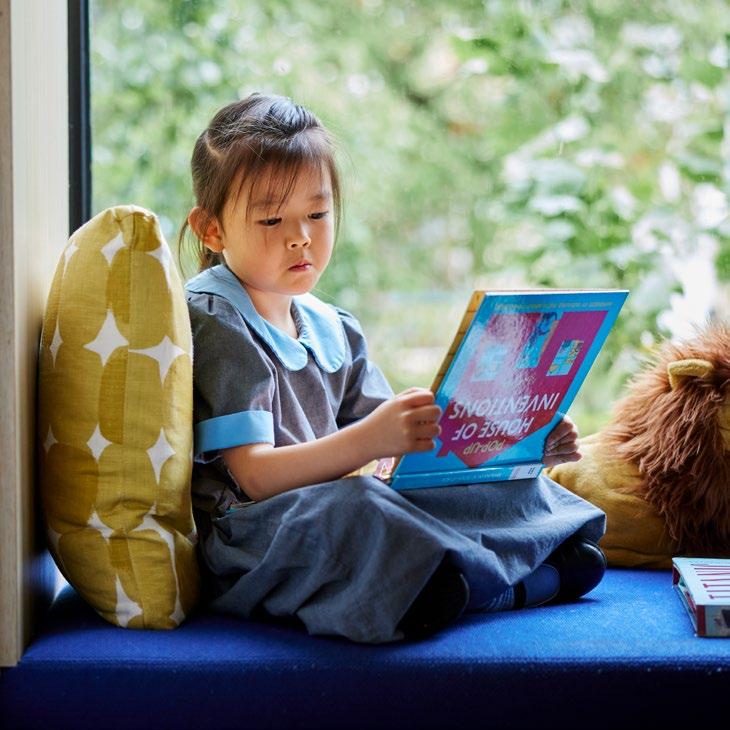
Name: Ms Karen McArdle Title: Head of Junior School
Date: 1 September 2023 Strategic Intent: Academic Achievement
While news across Australia has been focusing on the nation’s sliding NAPLAN results, the news at Barbreck is exceedingly good.
Education Ministers around Australia agreed to change the way in which NAPLAN results are reported from 2023. The numerical NAPLAN Bands (previously 10 Bands) and the National Minimum Standard were replaced with the following four levels of achievement:
Exceeding: results exceed expectations at the time of testing.
Strong: results meet challenging but reasonable expectations at the time of testing.
Developing: results indicate the student is working towards expectations at the time of testing.
Needs Additional Support: results indicate the student is not achieving the learning outcomes expected at the time of testing and are likely to need help to progress.
Australian students in Years 3, 5, 7 and 9 participated in NAPLAN in March. Individual results, with state averages, were released in August.
Across all the states and territories, Victoria had the highest results in the nation. When comparing our School to the Victorian state results, our Barbreck girls are well positioned to continue out-performing the rest of the country.
Using the combined averages for the ‘Exceeding’ and ‘Strong’ levels of achievement, the following results clearly show the advantages a St Catherine’s education provides.
In Year 3, the average for combined ‘Exceeding’ and ‘Strong’ levels for Barbreck was 92.85% while the state’s combined average was 68.12%.
Year 3 NAPLAN 2023 total percentage in strong & exceeding
Year 3 NAPLAN 2023 School to State average score comparison
Year 5 results are even stronger, with the average in the combined ‘Exceeding’ and ‘Strong levels of 96.78% compared to the State’s average in these bands being 72.34%.
There are a number of reasons why St Catherine’s girls consistently achieve well in these national assessments.
Our teachers are experts in their fields and dedicated to the girls in their class. At St Catherine’s we attract and retain exemplary staff.
Our students are supported. Our internal assessment program monitors each girl’s learning progress and identifies any gaps in learning quickly. We address these gaps, seeking support and guidance where necessary from our Learning Plus Department. We determine the instructional levels for each girl and have developed enrichment and extension programs to cater to girls performing above expected levels at Barbreck.
Our academic programs build lifelong learning. Our approach to teaching, using the ‘I do, We do and You do’ model of teaching, explicitly teaches small chunks of learning, making them easier to learn and move to long term memory. It also builds confidence in our students, teaching them at a pace that best suits their individual needs.
Our learning environment is nurturing. The learning environment we create at Barbreck encourages girls to focus on their learning and is stress free.
Through our approach to learning our young girls achieve well and move through their educational journeys with a love of learning and confidence in themselves.

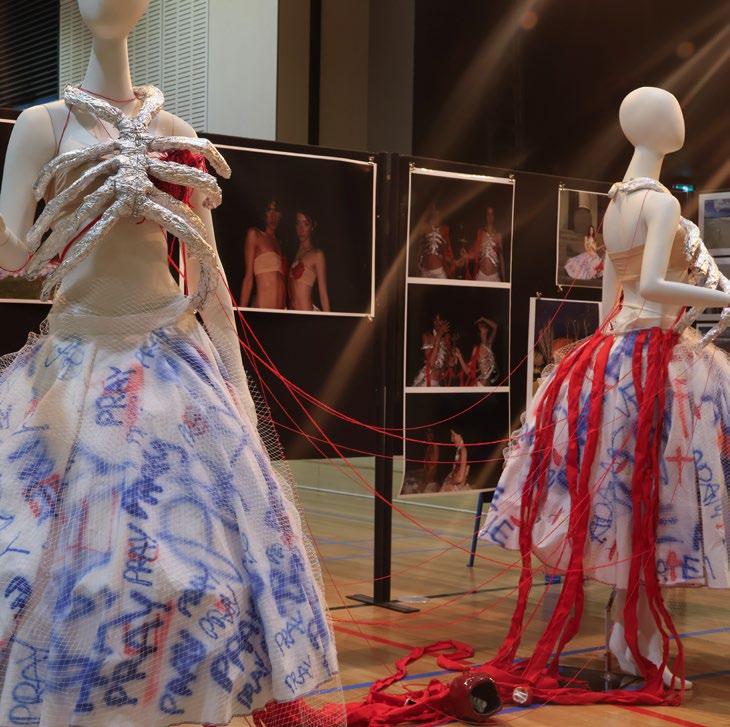
Name: Mrs Vicki Marinelli Title: Head of Arts
Date: 13 October 2023 Strategic Intent: Academic Achievement
We were honoured to have Ms Katherine Hattam (’68) inaugurate the VCE Art Show of 2023, held last Friday 6 October and across the weekend.
Katherine’s oeuvre spans several decades and encompasses a wide range of artistic mediums, including painting, collage, and printmaking. Katherine is known for her exploration of themes related to identity, feminism, and the human condition, often incorporating personal narratives and symbolism into her artworks.
During her opening address at the Art Show, Katherine gave special recognition to Year 12 student, Phoebe Russell’s Visual Communication Design folio, which ingeniously addressed the issue of educational disparities faced by females in developing countries using design thinking.
Katherine also acknowledged the profound exploration of anxiety cycles in Annie Seymour’s sculptural photographs and the skillful series of portraiture by Andrea Ting, which traced her own childhood development.
The VCE Art Show serves as a platform for students to boldly showcase their expressions, ideas, emotions, solutions, and thoughts in a very visible manner and we acknowledge their trust and ongoing creative focus. Irrespective of who was mentioned in speeches and who won Encouragement Awards, every VCE student’s work shone. It was heartening to hear the audience appreciate the entire body of work.
This year, I could not help but notice the special guests in attendance – the grandparents, siblings, aunts, and uncles of our artists – all gathered to support their family members. It reminded me of how much this community values an Arts education.
It was touching to see the ongoing support given to our VCE students, particularly as they approach their final exams and complete their schooling.
Well done artists, media producers, and designers!
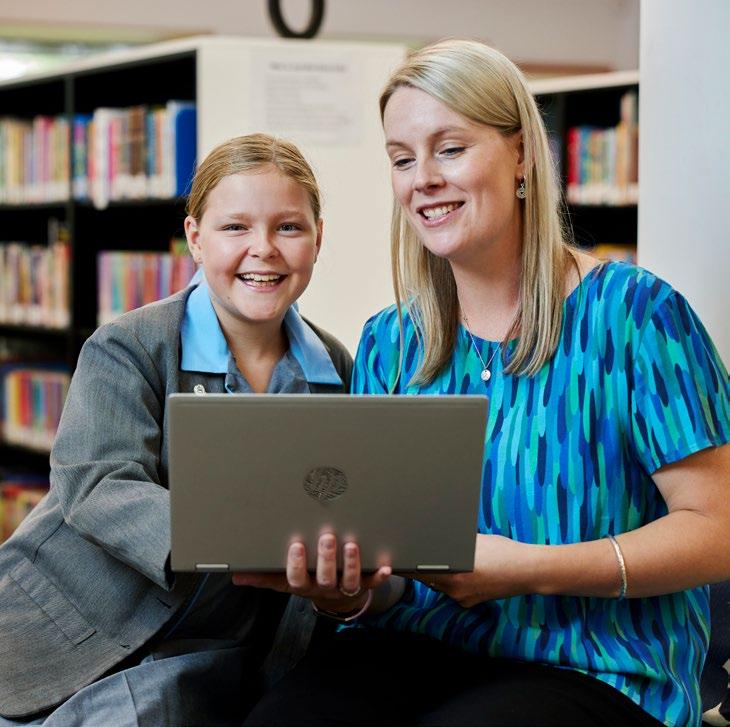
Name: Michelle Carroll Title: Principal Date: 27 October 2023 Strategic Intent: Exemplary Staff
At St Catherine’s today, we have teachers who are great activators of change for girls and who enhance their students’ learning immensely. I watch frequently teachers who encourage girls to be fearless, teach them how to harness the storm of adolescence, and encourage girls to question and believe in themselves and their abilities. The qualities in those teachers are always the same – an acute interest and belief in students, a desire to challenge them, and the power to inspire and uplift.
Australia’s celebration of World Teachers’ Day occurs on the last Friday of October each year. World Teachers’ Day was started by UNESCO and is celebrated in over 100 countries each year. On its 45th anniversary this year, it represents a significant token of the awareness, understanding and appreciation displayed for the contribution that teachers make to education.
Teachers are instrumental in shaping people. Some teachers play vastly under-recognised roles in setting high achievers on their paths. As one example, computer revolutionary Bill Gates, known for dropping out of Harvard, claims of his school Mathematics and Drama teachers, “There’s no way there would have been a Microsoft without what they did.”
The role of a teacher is compelling, with educators often energised by their mission. Teachers do more than teach, and their impact extends far beyond the classroom. I have always thought great schools reflect great teaching. In my conversations with Old Girls from St Catherine’s and past parents, I have been delighted to learn of the teachers who have been instrumental in shaping St Catherine’s girls over the past 127 years.
As we celebrate Teachers’ Day in Australia this year, we take this occasion to remind the broader community that “the right to education means the right to a qualified teacher.” This theme was chosen to mark the 70th anniversary of the Universal Declaration of Human Rights (1948), where education is recognised as a fundamental right. A right that cannot be fulfilled without qualified teachers.
As our Barbreck children learned recently at the celebration day for International Day of the Girl Child, one of the main challenges to this right worldwide is the continued shortage of teachers. There are an estimated 264 million children and youth still out of school globally. According to the UNESCO Institute of Statistics, the world needs to recruit almost 69 million new teachers to reach the 2030 education goal of universal primary and secondary education.
This ‘teacher gap’ is more pronounced among vulnerable populations – girls, children with disabilities, refugee and migrant children, and poor children living in rural or remote areas. Trained and qualified teachers are fundamental to the right to education.
Today, Friday 27 October 2023, the theme ‘Hats Off to Teachers’ encourages the community to share appreciation by posting a ‘hats off’ selfie on social media to celebrate teachers and tell the community what great teachers meant to you. This is an opportunity to join with Australia in celebrating teachers. So, I encourage you to grab your hat, beret, beanie, bucket, or bowler and remember to tag #worldteachersday@aitasl.
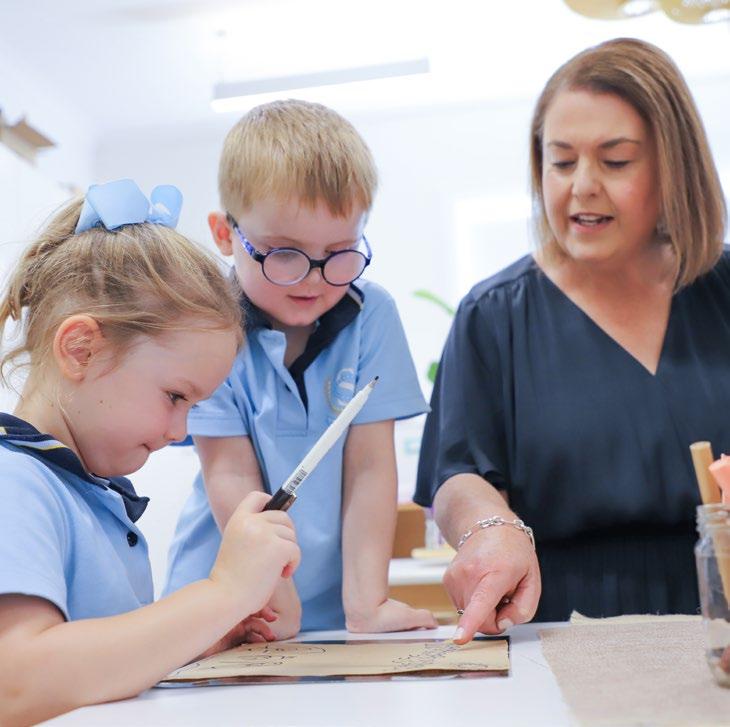
Name: Ms Sarah Bethune Title: Head of Early Learning
Date: 3 November 2023 Strategic Intent: Academic Achievement
The creative arts, including experiences such as drawing, painting, clay and wire sculpture, dancing, and music, play a significant role in the development of young children. They provide a unique avenue for children to express themselves, explore their world, and learn valuable life skills. There are many benefits to participating in creative arts experiences.
Self-expression: Creative arts offer children a nonverbal means of expressing themselves. Young children often find it challenging to articulate their thoughts and emotions through words, but through painting, drawing, or dancing, they can communicate their feelings, ideas, and experiences effectively. This helps them develop a sense of self and emotional intelligence.
Cognitive development: Engaging in creative arts activities fosters cognitive development in children. They learn to think critically, solve problems, and make decisions as they experiment with various materials and techniques. For example, painting encourages them to mix colours, observe cause-and-effect relationships, and plan their work.
Fine and gross motor skills: Through activities involving drawing and cutting, children refine their fine motor skills. These skills are essential for tasks like writing and managing a range of tools and implements. Dancing and playing musical instruments improve gross motor skills, enhancing balance, coordination, and physical fitness.
Social development: Creative arts can also be a social activity. When children participate in group activities such as dramatic play, dance, or collaborative artwork, they learn how to collaborate, communicate, and work together. This helps them build social skills and develop empathy.
Boosting creativity: Engaging in the creative arts stimulates imagination and creativity in young minds. Whether they are making up a story, composing a tune, or creating a piece of art, children learn to think outside the box, explore new ideas, and innovate.
Language development: When children participate in creative arts experiences, they often discuss their work or narrate stories related to their art. This boosts language development as they learn new vocabulary, sentence structures, and narrative skills.
Emotional regulation: Creative arts offer a safe space for children to express and process their emotions. They can use art as a way to cope with challenging situations or explore difficult feelings. This can aid in emotional regulation and overall mental wellbeing.
Cultural awareness: Through music, dance, and art, children can explore and appreciate different cultures. This helps them become more culturally aware and sensitive to the diversity of the world.
Confidence and self-esteem: As children see their creations take form and receive positive feedback from peers and adults, their confidence and self-esteem grow. This self-assuredness can extend to other areas of their lives.
The creative arts serve as a powerful platform for young children to learn and develop. They foster self-expression, cognitive and motor skill development, and social growth, while also nurturing creativity and emotional intelligence. Encouraging children to engage in creative arts experiences from a young age can have a profound impact on their overall development and future success.
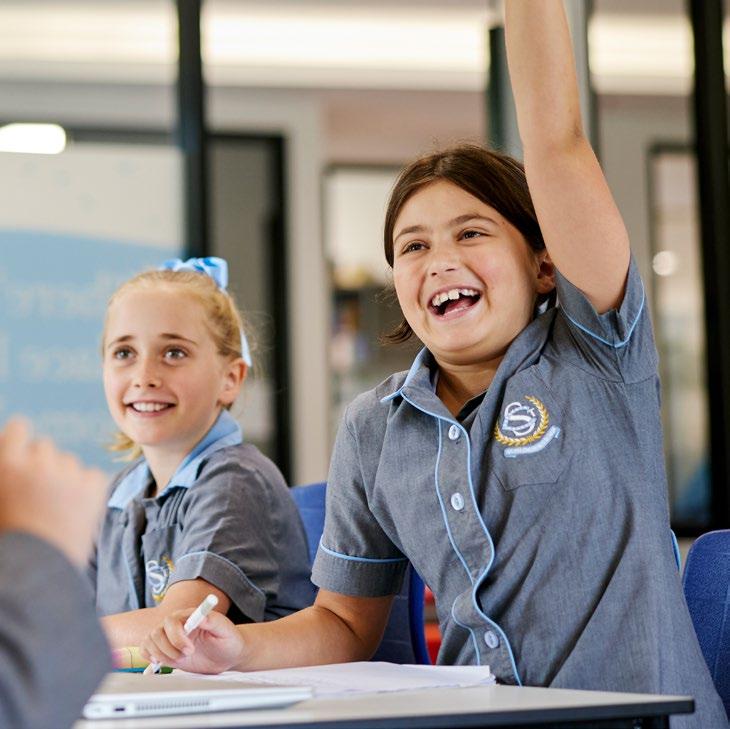
Name: Ms Karen McArdle Title: Head of Junior School
Date: 3 November 2023 Strategic Intent: Student Leadership
Our Year 5 girls are keenly looking towards changing their roles within Barbreck as they become our Year 6 leaders in 2024 and accepting greater responsibilities with the upcoming student leadership election.
As our girls progress through Barbreck, they receive instruction and guidance in various leadership qualities. Foremost, girls learn that leadership involves taking on responsibilities.
In the early years, this may entail simple tasks such as collecting worksheets, delivering messages, or organising equipment. These responsibilities progressively expand as they move through our Junior School, encompassing tasks like organising House Teams for Cross-Country or leading fundraising events, as demonstrated by some of our Year 4 girls earlier this year.
Leadership also revolves around setting a positive example and exercising sound judgment. Adhering to the School Uniform code with pride, abiding by School rules, and showing kindness and consideration to others all reflect a girl’s commitment to respecting her school and her peers.
It underscores an understanding of the importance of membership and the social constructs of the Barbreck community. Additionally, it acknowledges that younger girls consistently look to their older counterparts for guidance and the important role our older students play in role modelling our School Values.
Leadership extends to character building. Collaborating with our Barbreck parents, teachers work with our girls to instil a sense of right from wrong, values, ethics, effective problem-solving, resilience, persistence, and the art of forming and maintaining friendships.
Leaders depend on the support of those who believe in them and are willing to follow their lead. It also involves nurturing a strong inner voice (conscience) that speaks clearly and guides them along the right paths in life.
Our School Programs encompass the development of many qualities that complement leadership skills. This includes proficient speaking skills, as showcased at our recent Public Speaking Assembly, along with speech writing, event planning, organisational skills, teamwork, collaboration, and interpersonal abilities.
In the lead up to our Student Election discussions with the girls will cover a variety of topics, such as:
Identifying the qualities that define a good leader.
• Making informed decisions.
• Recognising that voting is a personal and anonymous choice.
• Emphasising that leadership centres on fulfilling responsibilities, rather than merely wearing a badge.
• Highlighting the importance of being a role model, working behind the scenes, and occasionally participating in events.
Our Year 5 girls will learn about the election process, and we look forward to informing the Barbreck Community of the results in the coming weeks.
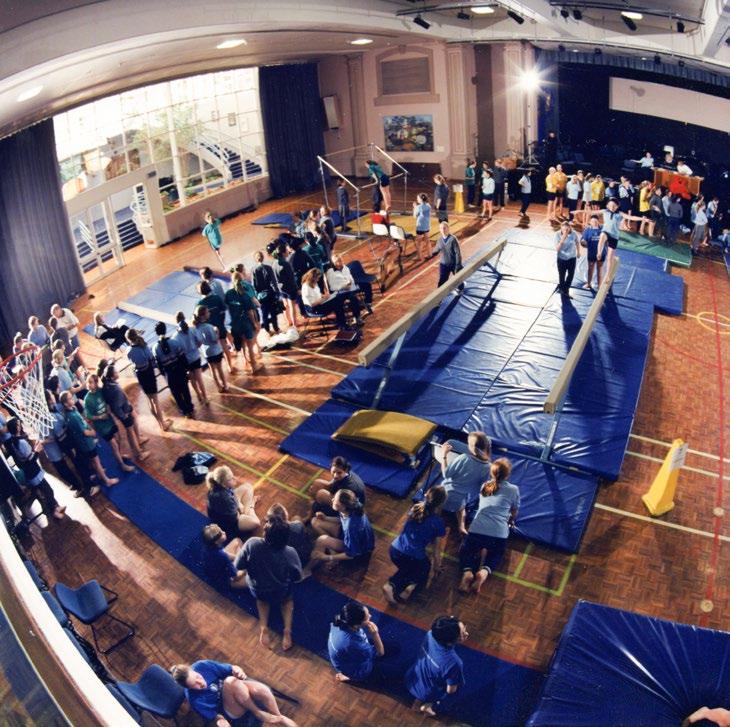
Name: Ms Melissa Campbell Title: Archivist Date: 10 November 2023 Strategic Intent: Securing our Future
In the 1921 November Edition of the St Catherine’s Magazine, Mrs Cynthia Hunter (Taylor ‘22) wrote, “Fifty years ago it was thought unladylike and tomboyish to play any strenuous games such as hockey or basketball and people would have been horrified at the very thought of girls playing football. The present-day girl plays all these games, and none is worse for it.”
The first sporting teams to be created at St Catherine’s, Toorak were recorded in the 1920s School Magazine as Tennis, Hockey, Basketball and Running. In 1924 the first Baseball team was formed.
In 1956 the School Hall, now redeveloped as the Nicholas Library, opened to accommodate School assemblies, freeing up the Ballroom in Sherren House to become a gymnasium complete with vaulting horse.
The brochure, Building for the Future outlined the need for improved and more facilities at the School with student numbers increasing from 500 to 800 over 10 years. It was also a priority to provide extra-curricular opportunities. The Master Plan outlined new facilities including a modern library, hall, and gymnastics studio. There was also a need to provide both indoor and outdoor facilities due to inclement weather and to reduce the strain on the School’s present physical facilities.
Miss Pizzey wrote in the 1989 School Magazine, “1989 has been a year of celebration at St Catherine’s. About
10 years ago we devised our Master Plan for the School. We thought through our educational programme and built new facilities or refurbished old ones to allow us to enlarge our curriculum or strengthen it.”
The new Hall was designed as a flexible space to provide indoor playing spaces for sports, and small rooms for workshops and lectures. The original Gymnasium was retained while the Music School was extended. Two tennis courts were built at the rear of the Music School.
Former Deputy Principal Mrs Yvonne Taylor, wrote in the 1990 St Catherine’s Magazine, “[Our School] responded with enthusiasm when the Hall offered a whole new range of sports including Badminton, Table Tennis, indoor Soccer, and Hockey as part of the sporting program. Currently 100 girls are attending sessions for Basketball establishing the basis for future success. The St Catherine’s Hall has been in operation for over a year, and it has added a new dimension to life at School.”
St Catherine’s Hall was renamed the Dorothy Pizzey Centre upon Miss Pizzey’s retirement in 1997. The continuing development of Sport for St Catherine’s students has created an enduring participation in individual and team sports, fostering teamwork, sportsmanship, and a love for physical activity.

Names: Ava Colosimo & Flora Du Title: 2023 School Co-Captains
Date: 31 October 2023 Strategic Intent: Student Wellbeing & Leadership
As the Class of 2023 tied our blue ribbons, put on our Year 12 jumpers, and ascended the steps of the Common Room for the first time this year, we had only one promise to ourselves, to Conquer. To face each challenge that came our way, each step and each new goal with determination, kindness, and bravery.
“Watch the queens conquer.” One of the first few lines that we announced to the School during our first-ever assembly on the fields. A quote from none other than rap artist, Nicki Minaj, but nevertheless one that we hoped would inspire the St Catherine’s student cohort to embrace their power and fearlessly pursue their goals in 2023.
After the Year 12s Leadership Conference at Melbourne University’s Ormond College, our Cohort laid forth our vision for the year and determined the legacy that we wanted to leave behind. We wanted to step into this final year of senior school with both excitement and anticipation, to collectively navigate our hardships together, and most importantly, we wanted to be proud of ourselves – regardless of the result – in knowing that we all placed our best foot forward. We wanted to conquer 2023… and conquer we did.
From the very start, Term 1 brought our first challenge: the renovation of the School Hall. We had to get creative and find different places in the School to seat over 500 girls for Senior School Assembly. It was a rocky start, but we slowly built-up momentum after experimenting with all sorts of ideas. From having a pool assembly with live synchronised swimmers to holding the students in The Jamie and Rebecca Gray Theatre with music and microphones, we really did try it all. Yet, while these hectic assemblies were both fun and unique, it would not have been possible without everyone’s patience and cooperation.
Then came the opening of the refurbished Sports Hall and the return to normally formatted assemblies. Having a dedicated space with a proper screen, we could now introduce video segments featuring the rest of the School,
delving into topics such as study tips, favorite coffee drinks, and words of wisdom from each Year level.
Whilst our surroundings had changed several times throughout the year, the consistent thread connecting each assembly was the talent and achievements of the St Catherine’s cohort. From incredibly inspired performances, fierce debaters, and powerful sportswomanship, 2023 saw the excelling of students across all platforms. We could not be prouder.
However, what really stood out this year was the kindness and comradery of the whole School. The little moments of friendship between students in all Year levels, waves in the hallways, quick chats in the café line and smiles to each other on the way to class. These are the memories that unite and define the effervescent energy of our School.
From cheering on our friends at lunchtime dodgeball matches, Matilda’s inspired soccer games, assembly talent segments, and book characters or culturally inspired costume days, the support and passion of our School to rally around each student is evident to all.
Once the Class of 2023 walks through the Heyington Gates for the final time, we will leave as strong, fearless individuals, secure in the belief in ourselves and the endless possibilities of our futures – belief fostered by the support and kindness of each and every St Catherine’s girl.
Whilst it is a seemingly impossible task to try to encompass the year that was 2023 in mere words, we have only one; conquered
We both feel so proud of each girl and of all that has been achieved this year. We are so grateful to have seen the talent, bravery, and courage of each student. We hope each of you sees it too.
What a year St Catherine’s, from the bottom of our hearts, thank you.
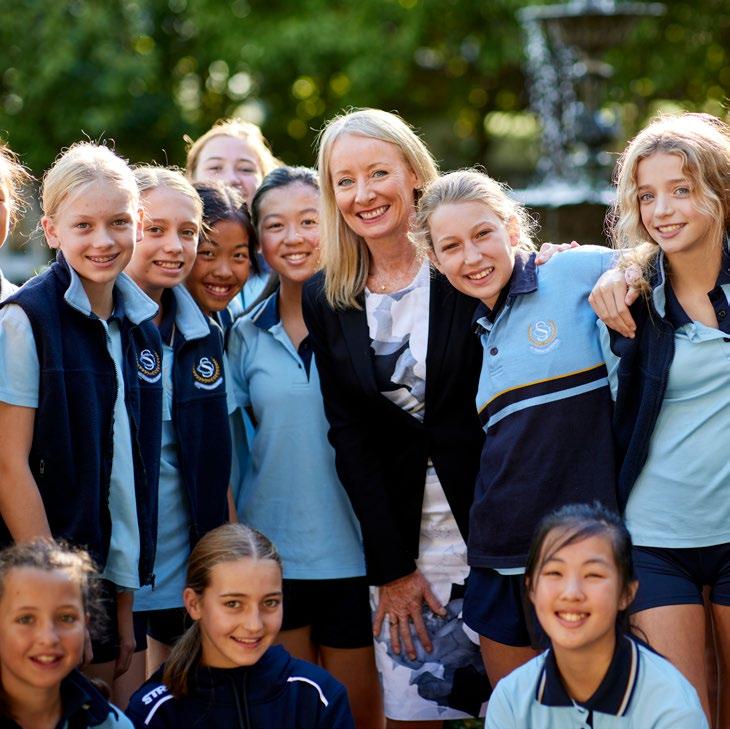
Name: Michelle Carroll Title: Principal Date: 7 December 2023 Strategic Intent: Exemplary Staff
When I first walked through the Heyington Gates a decade ago, I never could have imagined the depth of impact that undertaking the role of Principal at St Catherine’s School would have on my life.
I have always been inspired by the story of our Founding Principal, Miss Jeanie Hood, who stood on the front doorsteps of a house in Castlemaine –127 years ago – and 16 girls were welcomed through the door. Little could Jeanie have imagined how that one act, coupled with her hard work and intuition, would engender stories that span generations of St Catherine’s School students – stories that changed lives.
I am acutely aware that in this role of Principal, we are quite simply ‘custodians’ by the very nature of the job. Together with the work of past Principals including Miss Ruth Langley, Miss Edna Holmes, Miss Mary Davis, and Miss Dorothy Pizzey AM, and others – all stewards of this School for a time, we have collectively committed to educating generations of young women.
Together with colleagues, I have witnessed firsthand how St Catherine’s makes a lasting difference in the lives of our students. The commitment of the exceptional staff at St Catherine’s, together with dedication of the Senior Leadership Team have been the backbone of our success. I am indebted to each one of them for their tireless efforts and unwavering commitment to our shared vision.
I stand together with these people, immensely proud of achieving our two strategic plans and most notably a transformative Thinking Agenda that changed the discourse of teaching and learning at St Catherine’s. This Agenda has nurtured the intellectual growth of every girl, encouraging them not to mechanically memorise content but to grapple with the nuances of their subjects, learning the complexity of reasoning, justifying, and building knowledge.
Behind the scenes, I have witnessed the dedication, collective care and hard work of our School Council,
and Council Committees – Finance, Risk, Building and Property, the Foundation, and Community Engagement.
It brings me immense joy to reflect upon the journey we have undertaken together over the past 10 years. Serving as Principal with their support, I have had the honour of witnessing each decision made with students at the heart of our vision.
A vision that comes to life with girls bounding into the new Barbreck Junior School or graduates stepping from our Chemistry, Biology, and Physics Labs in the Edna Holmes Centre for Science, to now pursuing careers in biomedicine, engineering, veterinary science, or embracing their passion for musical theatre in The Jamie and Rebecca Gray Theatre or the sporting elite as girls train in the newly refurbished Dorothy Pizzey Hall and Strength and Conditioning Studio. She is strong.
Behind the stately Heyington Gates, a sanctuary unfolds, nestled amongst 66 meticulously replanted rose bushes, much to the delight of our cherished Old Girls, a beautiful campus, and an inspiring education.
From the very beginning, I was inspired by the potential and the boundless dreams of our students. Students who have graced the halls of Sherren House – their dreams, aspirations, and challenges have been etched in my heart. I have watched them blossom into capable young women. I am immensely proud of each and every graduate and look forward to hearing and celebrating their achievements over many years.
I always enjoy the rhythm of the school year. This is so apparent in Term 4, with the first six weeks so academically heavy, focused, and intense with the annual VCE examinations. Then, the roses around the Fountain bloom, and we step forward into a new journey, and spirits lift with the much-anticipated House Arts Week. To the unsuspecting outsider, House Arts appears somewhat chaotic, but to those on the inside, we know the brilliance that awaits.
This rhythm of the school year is familiar to me. It is St Catherine’s generosity of spirit and the knowing balance of working hard but also being able to see the good in life and enjoying it.
The privilege of leading St Catherine’s has been both an honour and a joy. I express my heartfelt thanks for the unwavering support of the School community. As I step into the next chapter of my life, I carry with me the memories of shared successes, challenges overcome, and the incredible spirit that defines our School.
I am profoundly grateful for the opportunity to have been a part of this community. I look forward to witnessing the continued success and achievements of this remarkable school for years to come. Thank you for a decade of shared dreams, laughter, and growth.
As I extend my farewell, I do so with much gratitude and appreciation.
